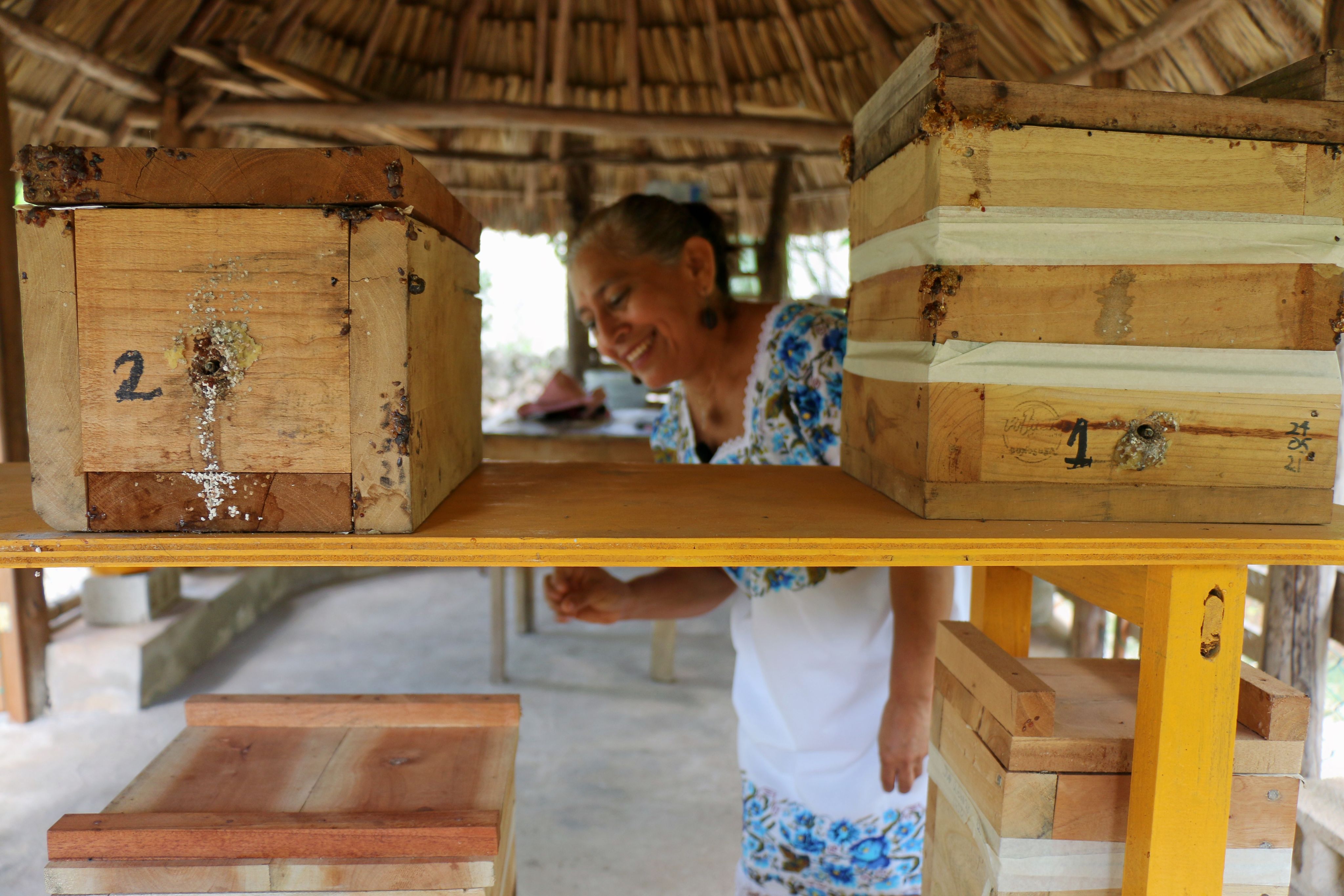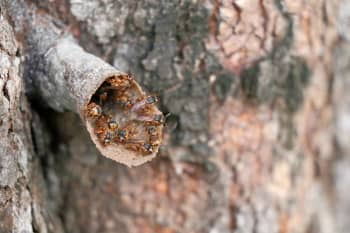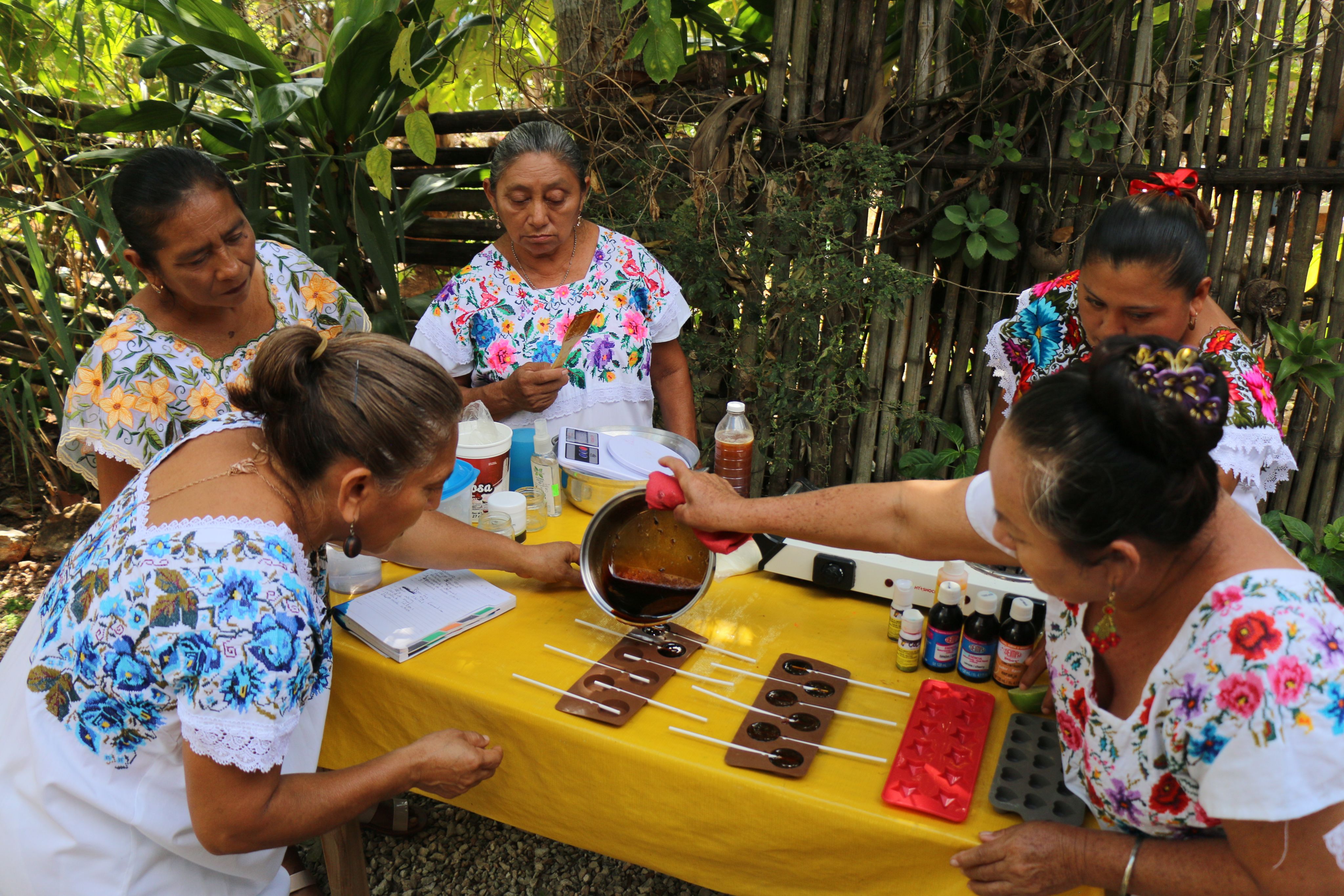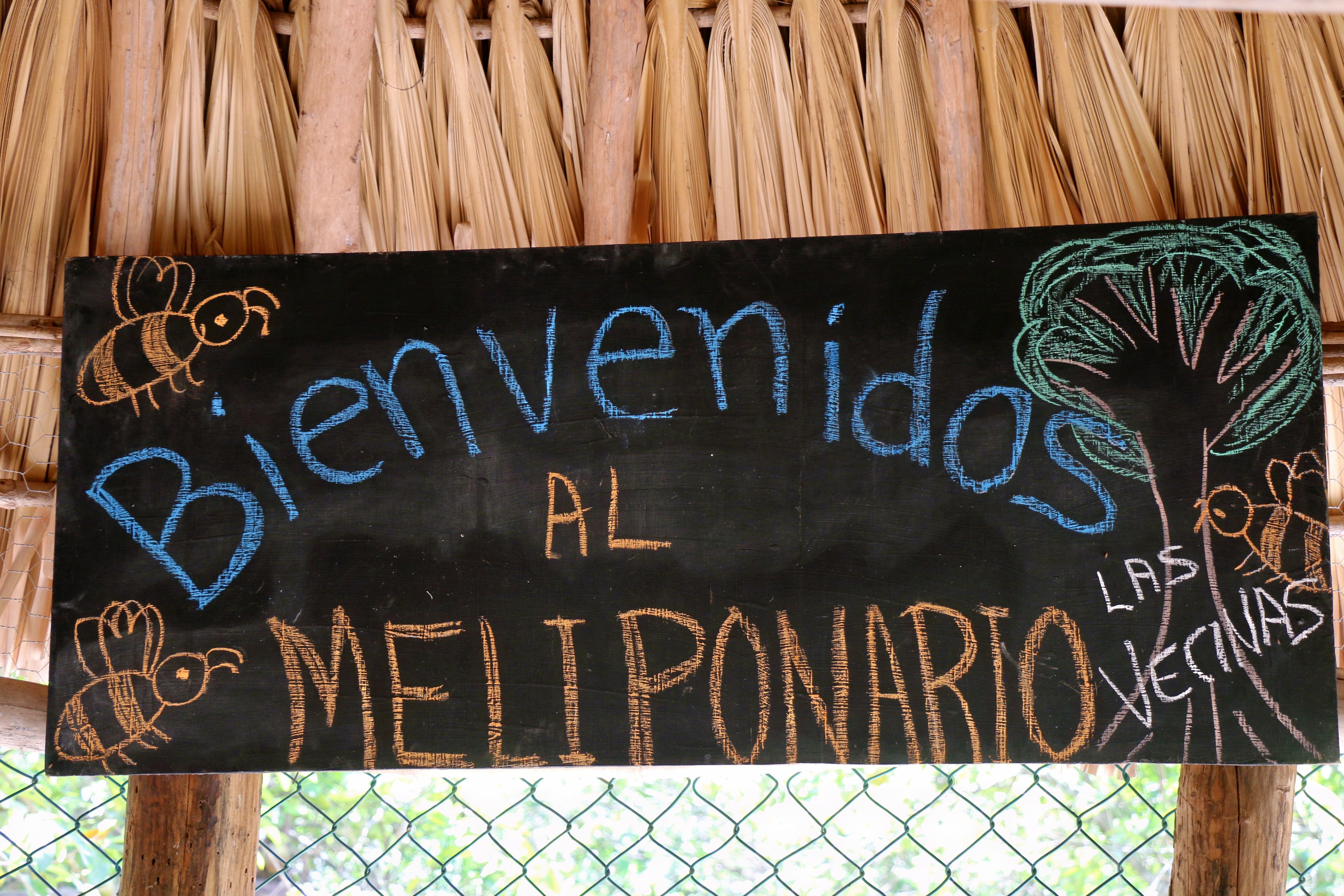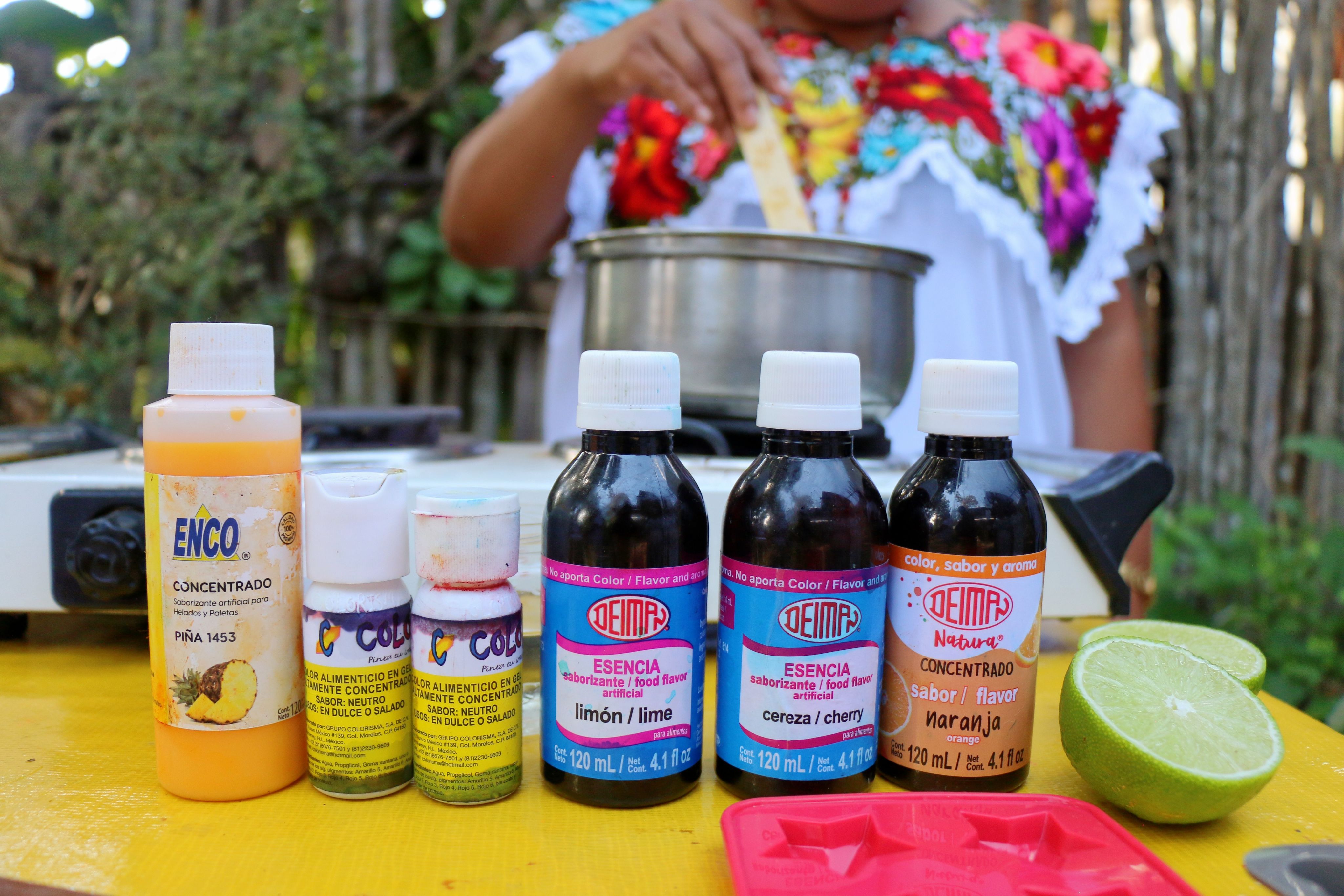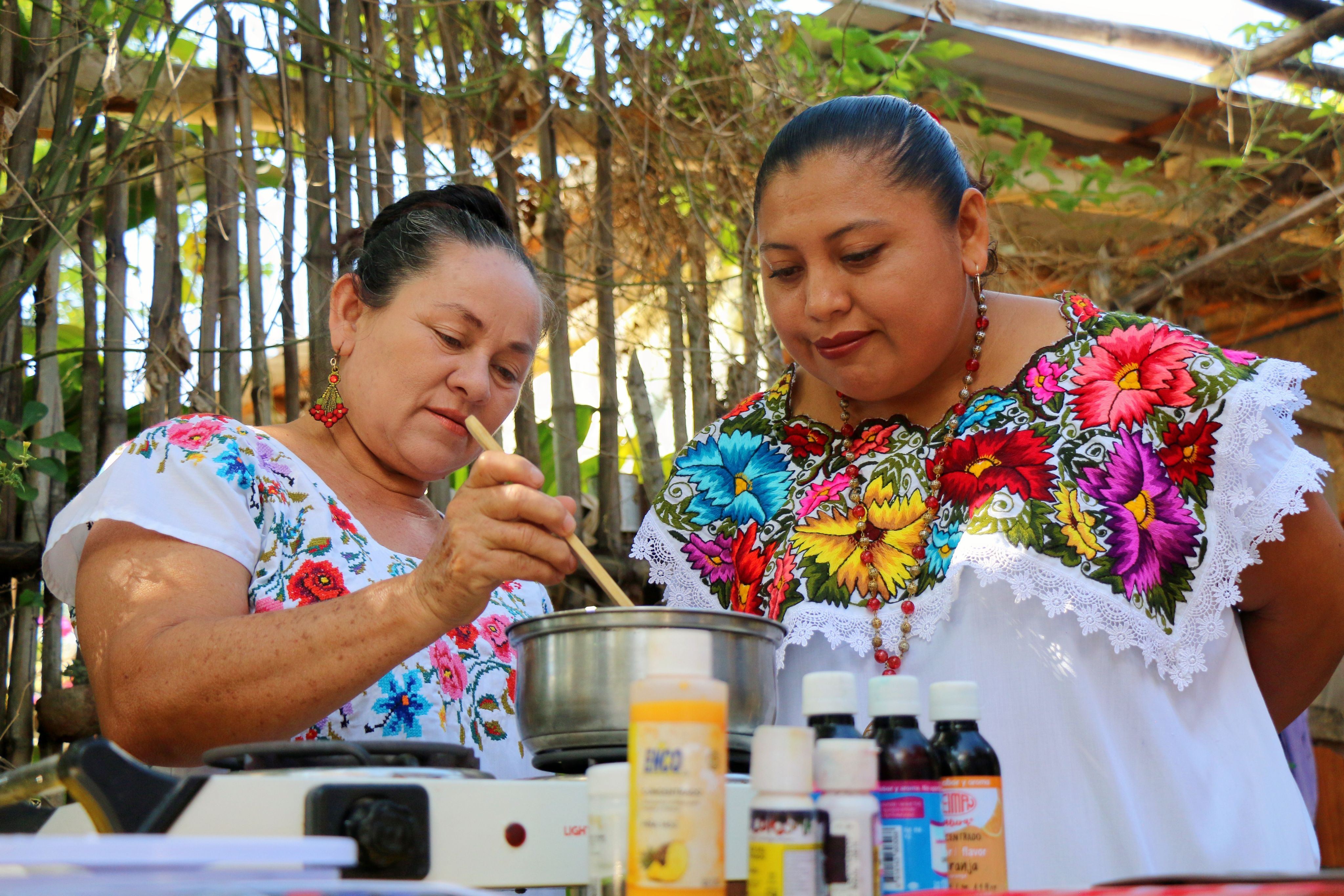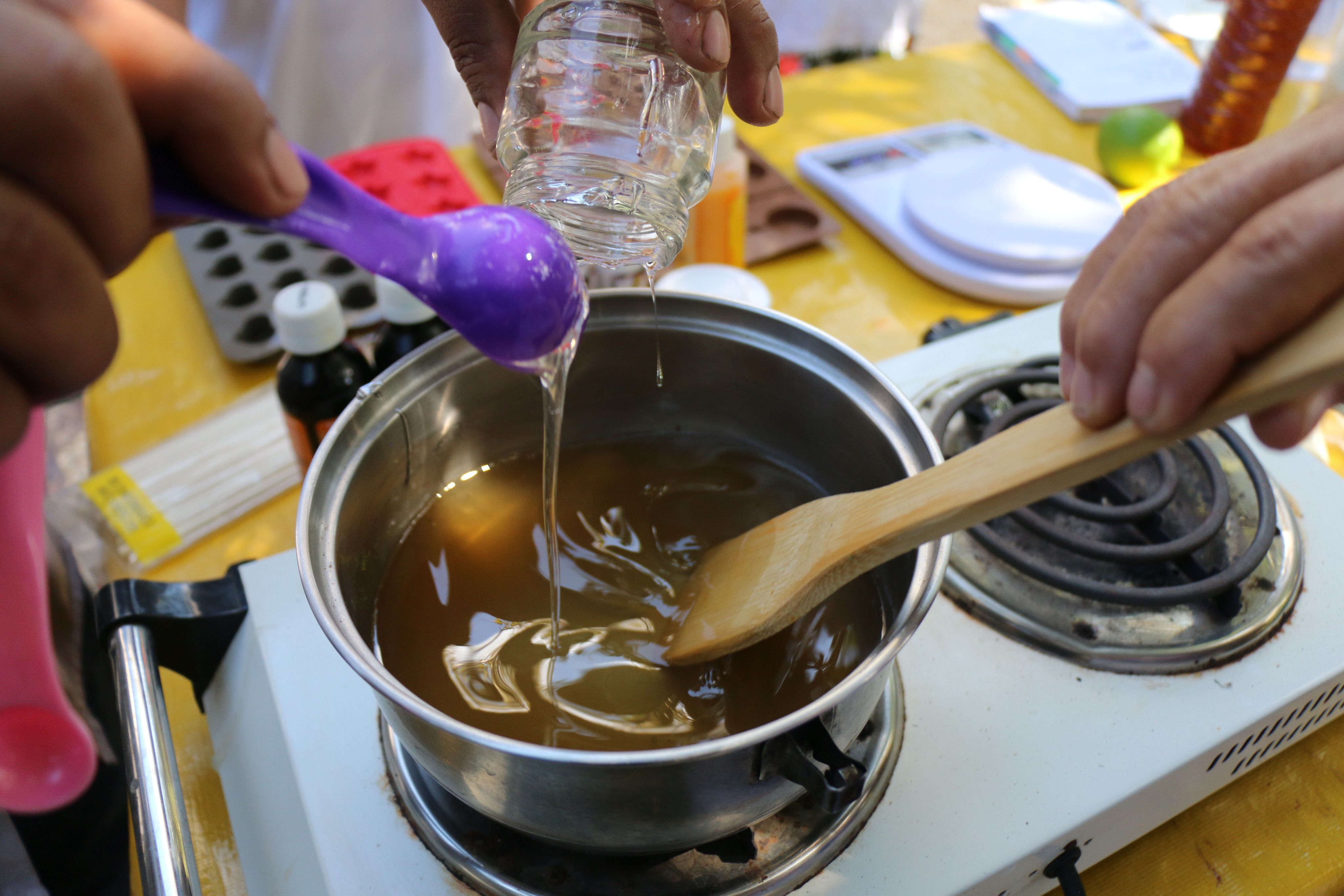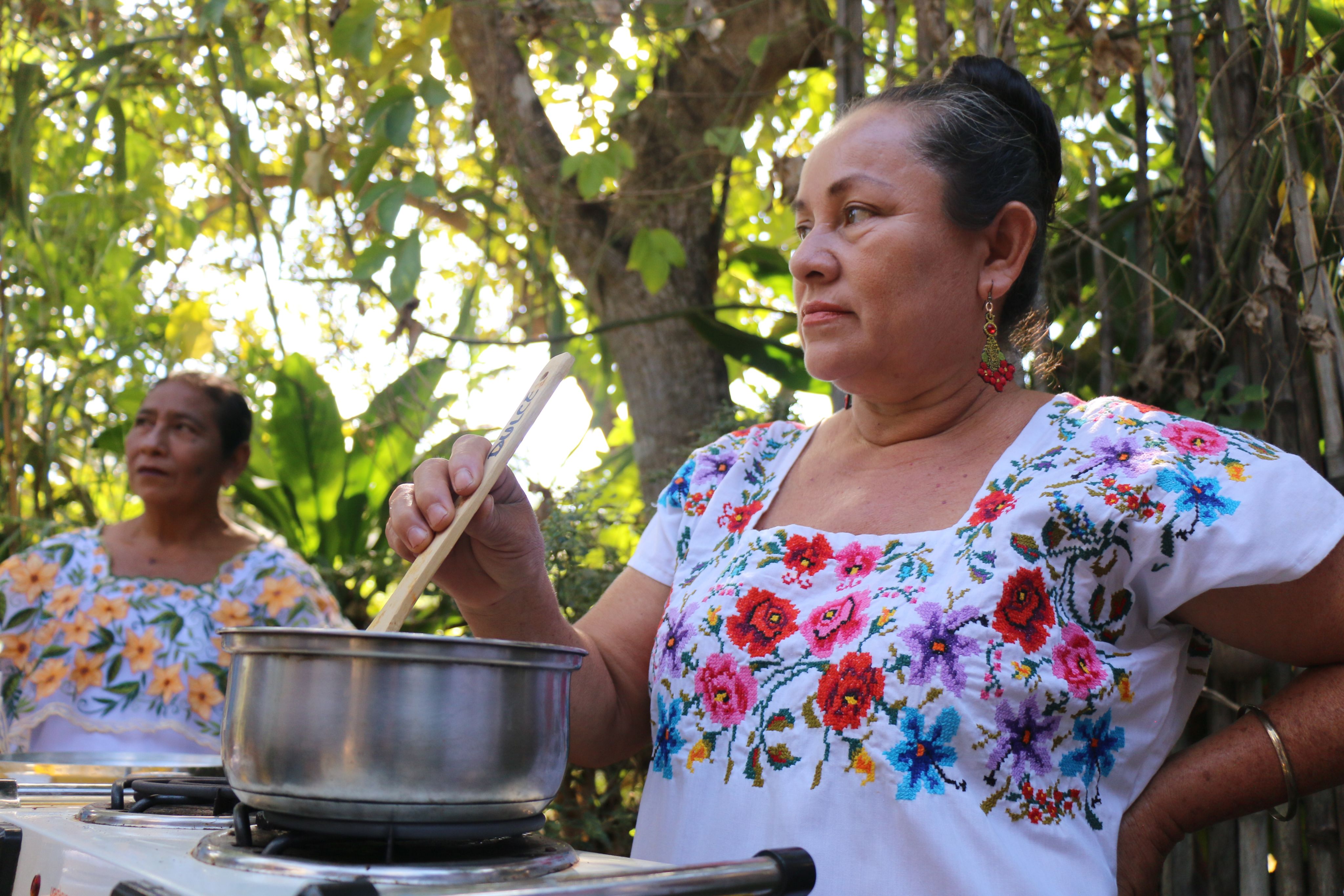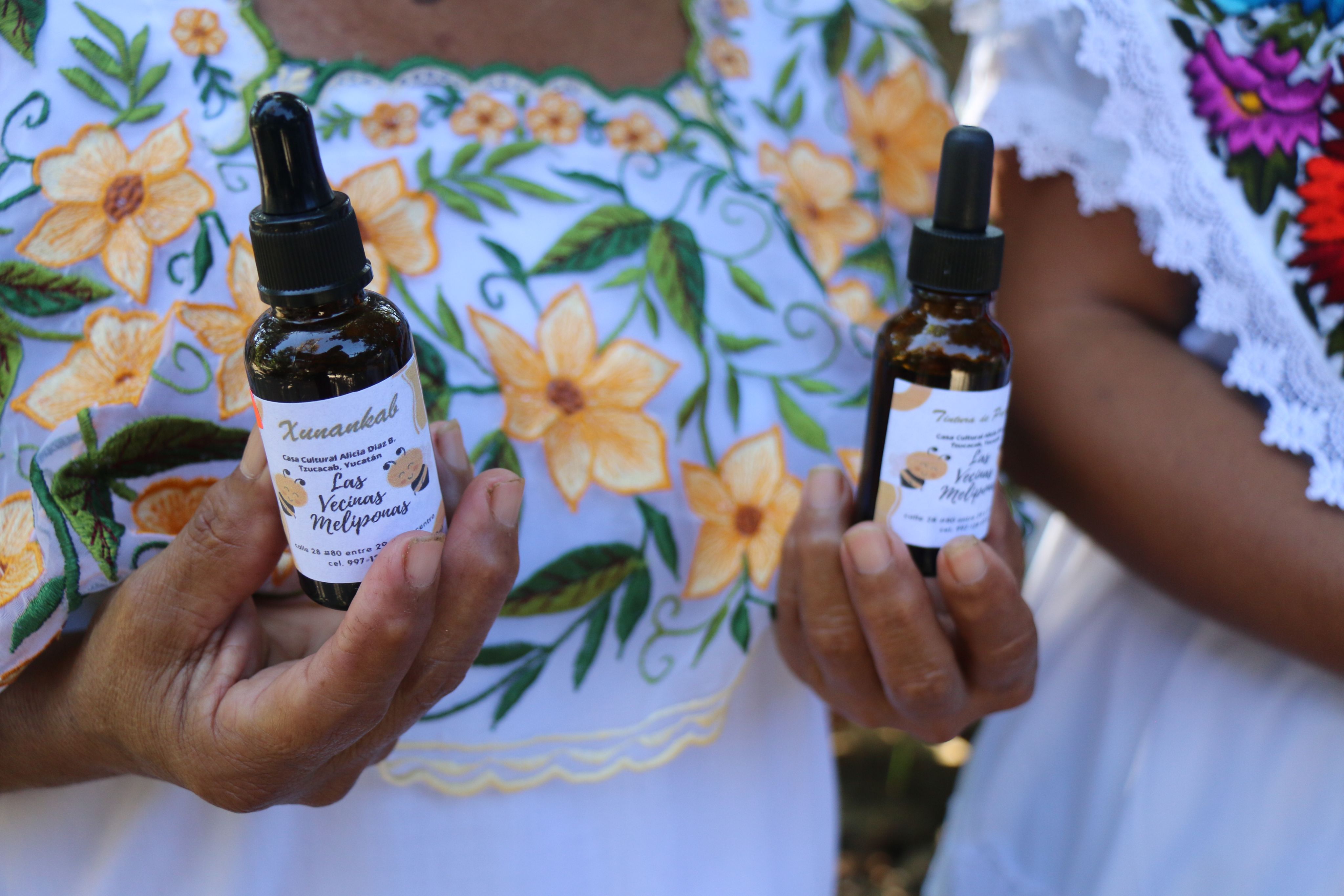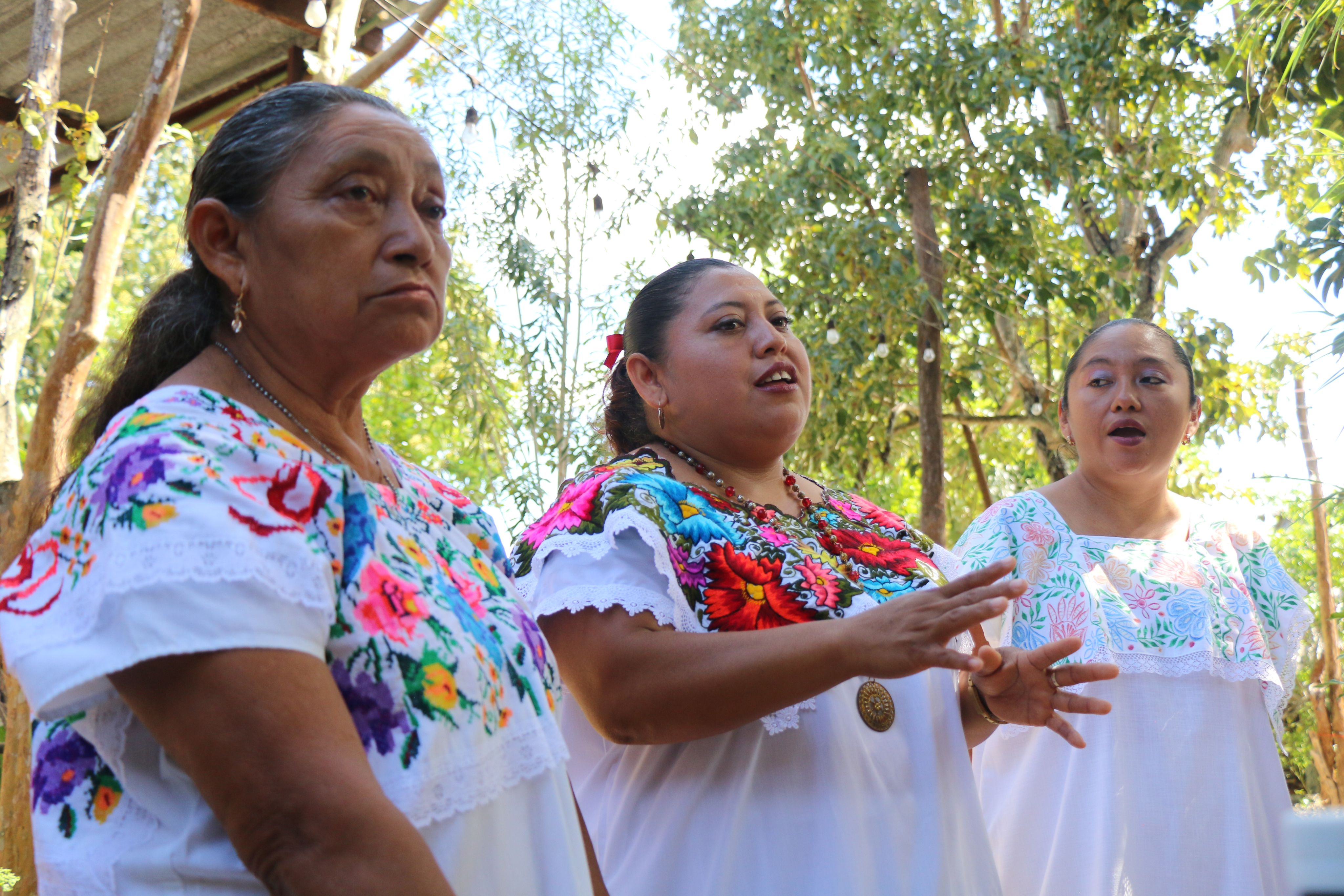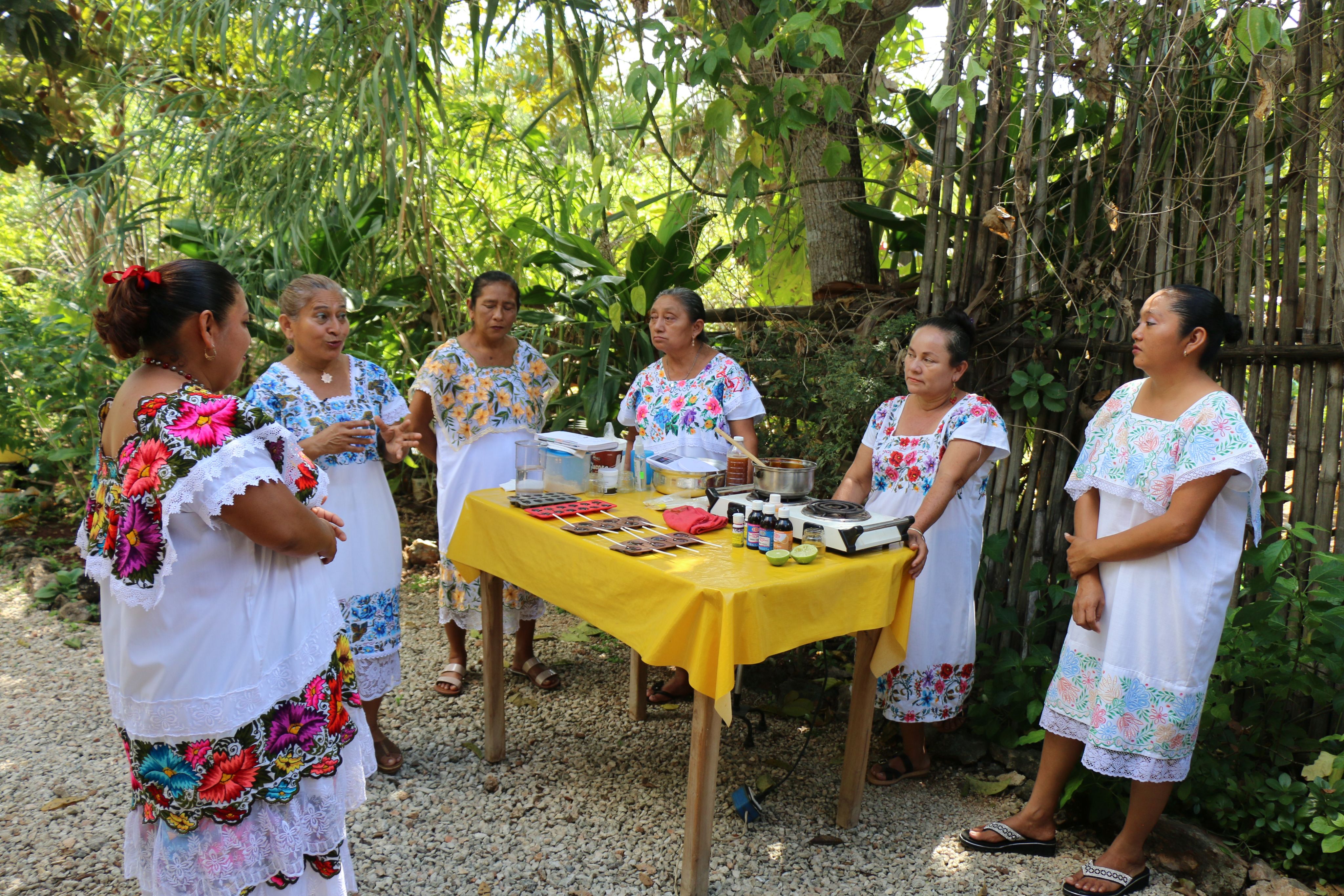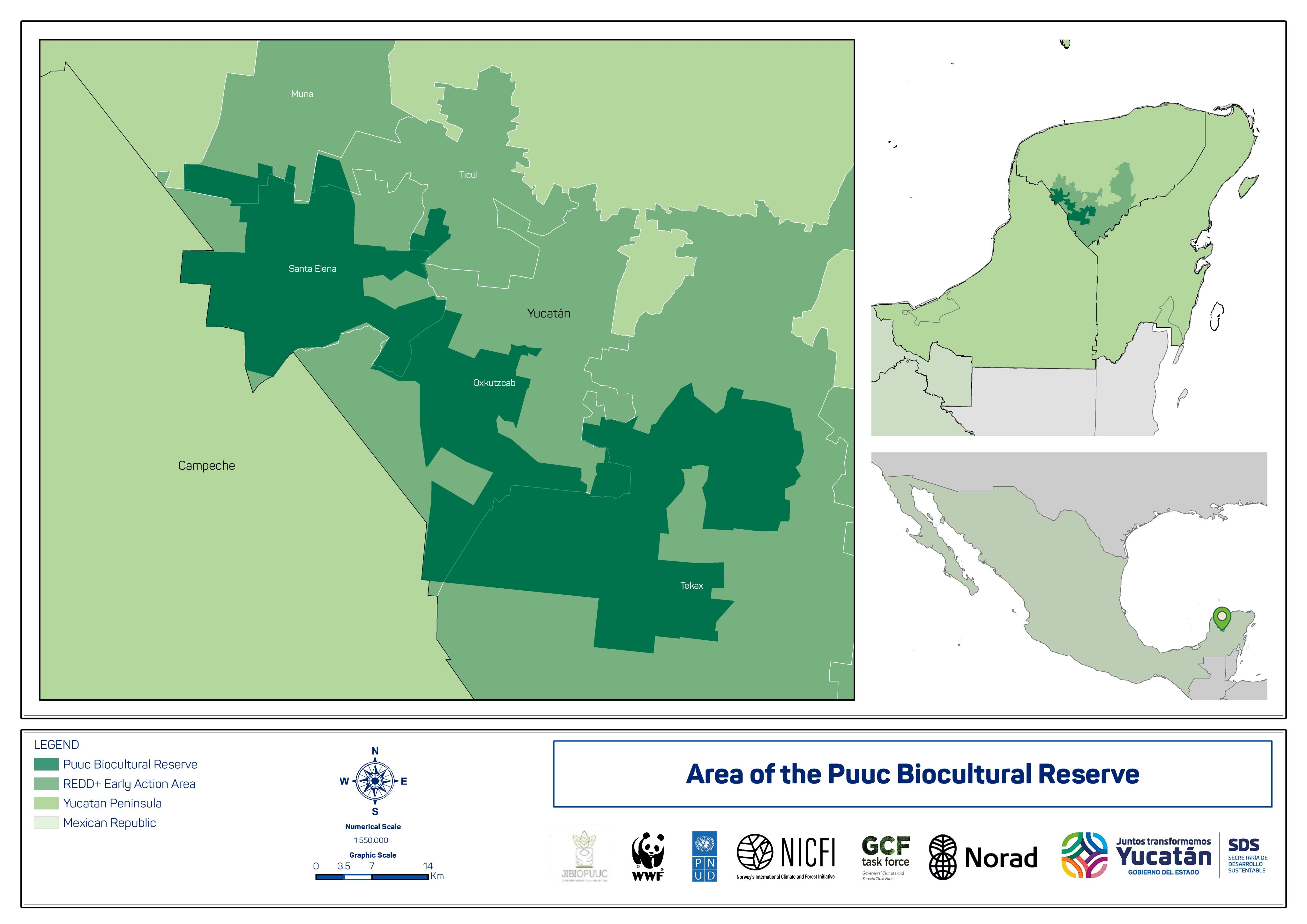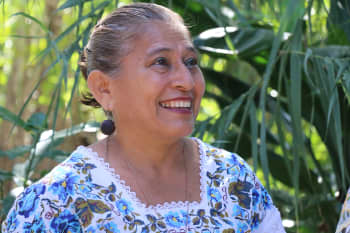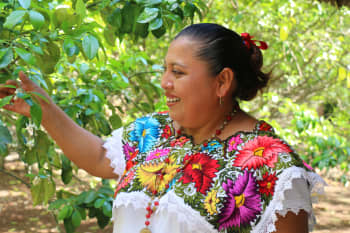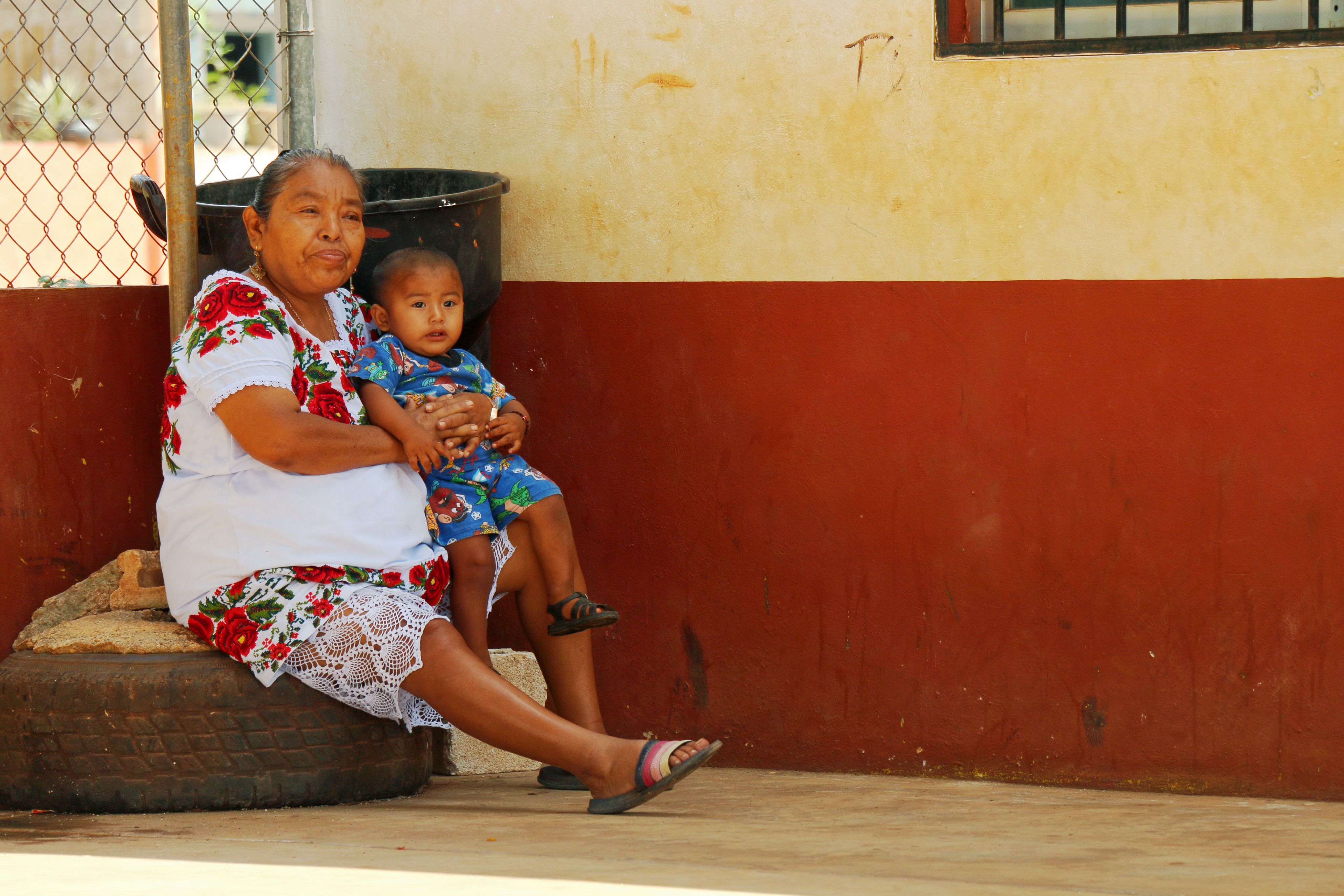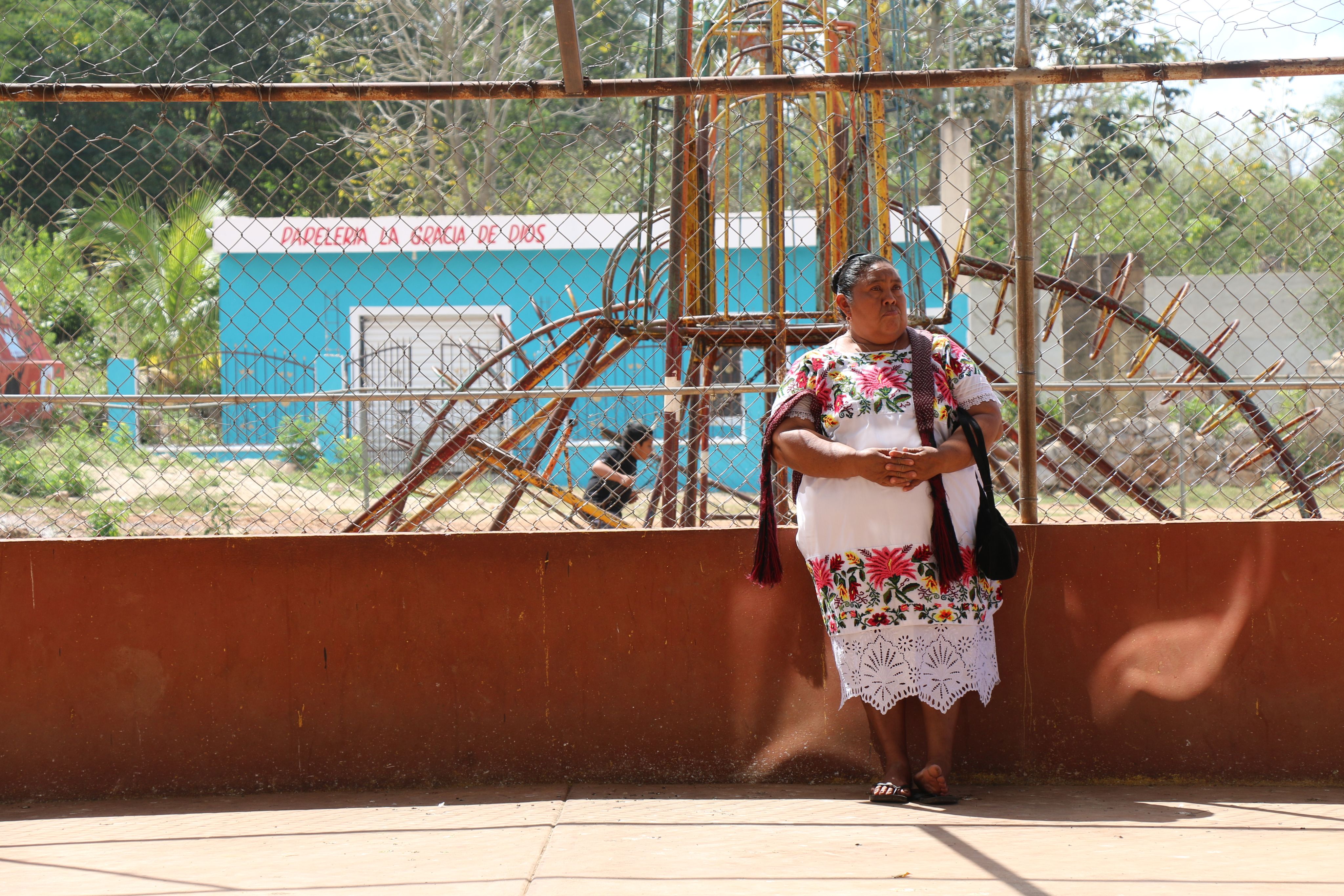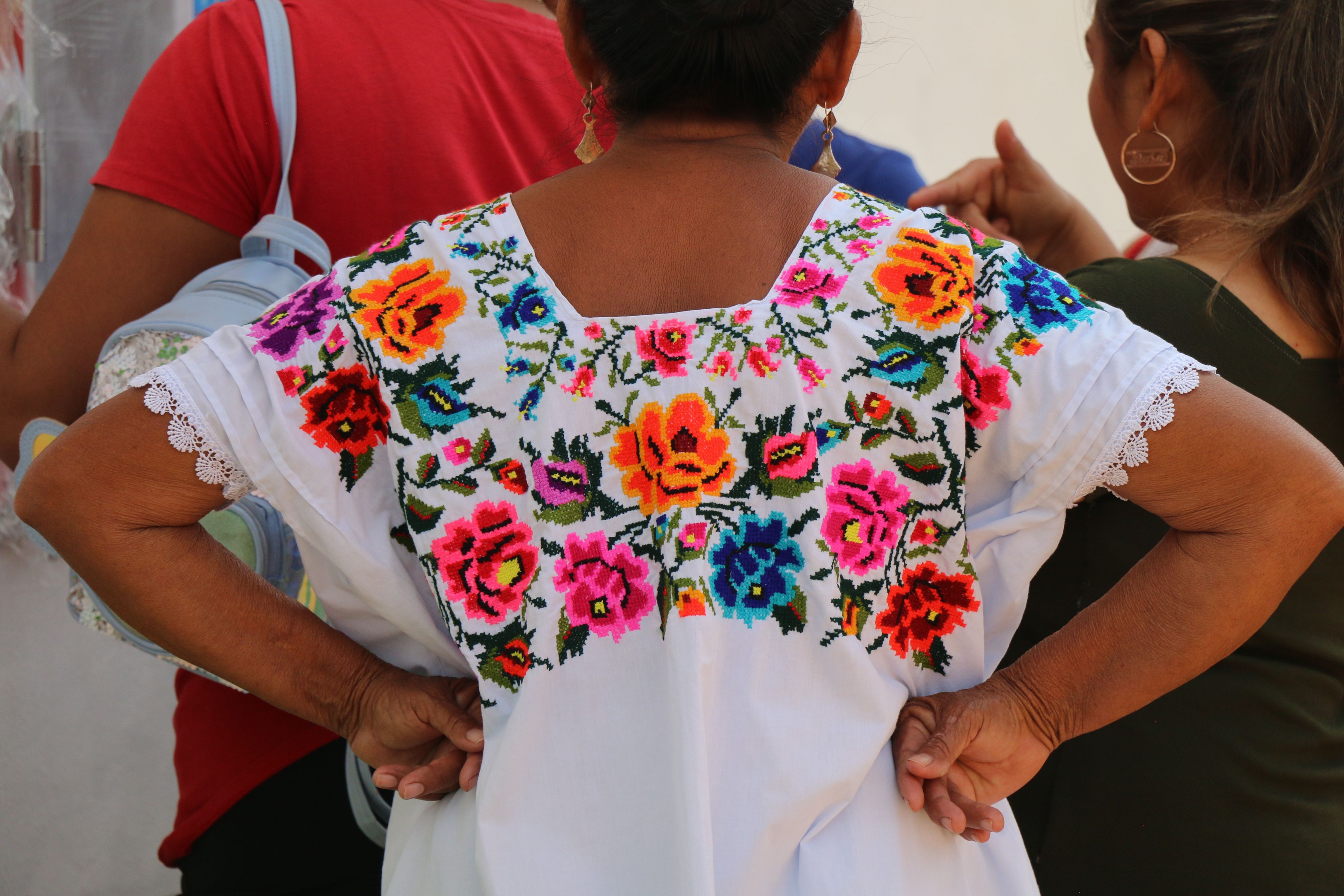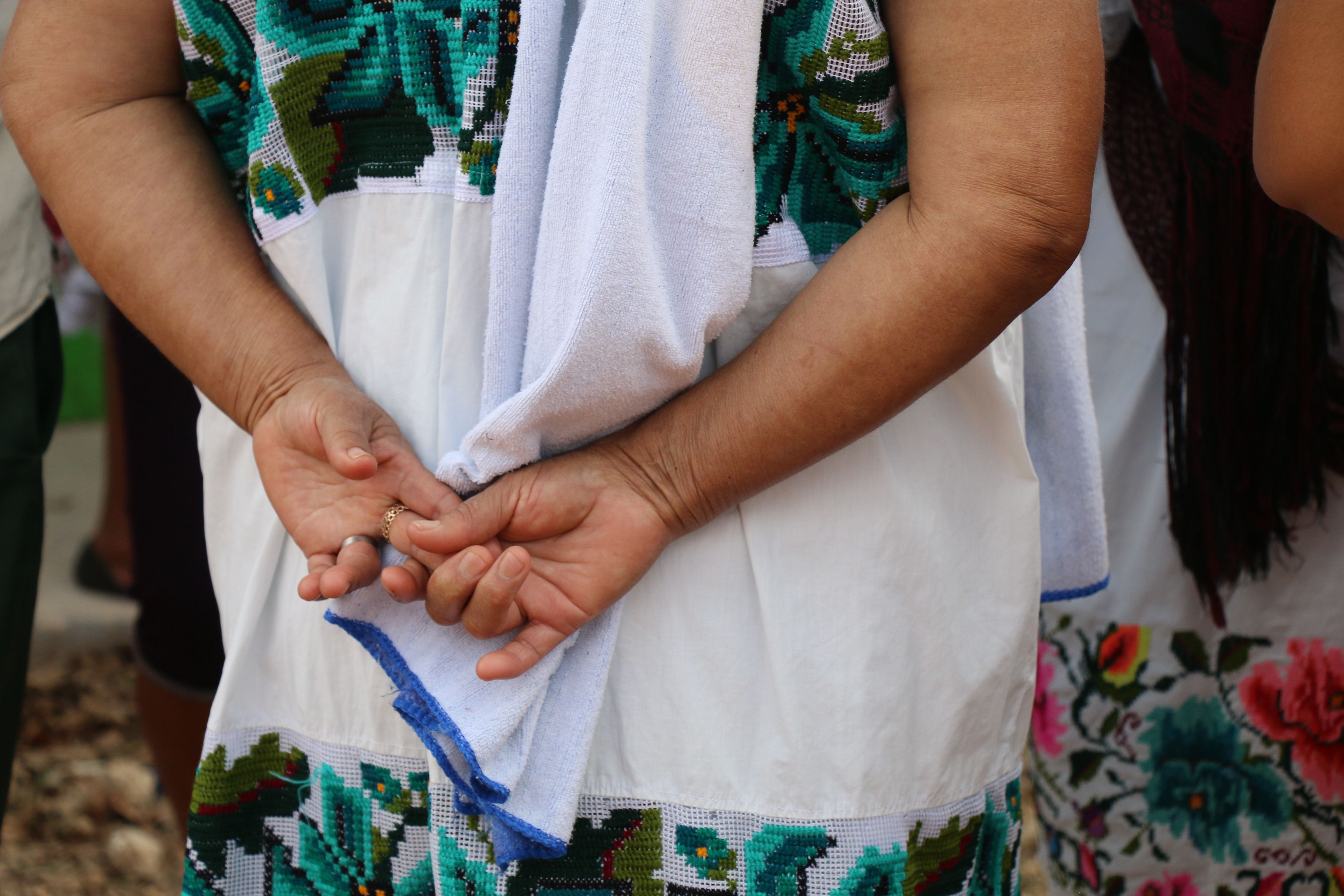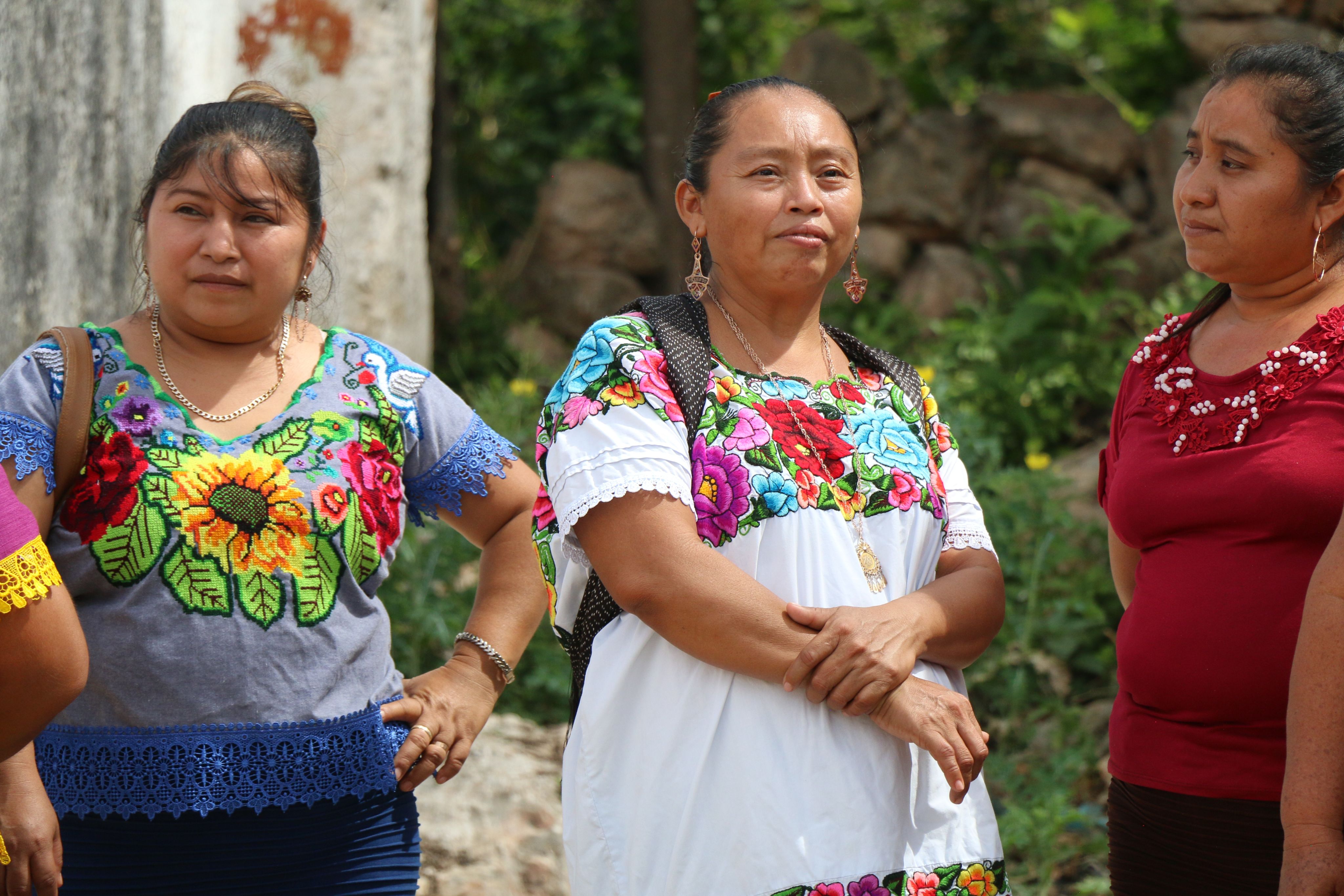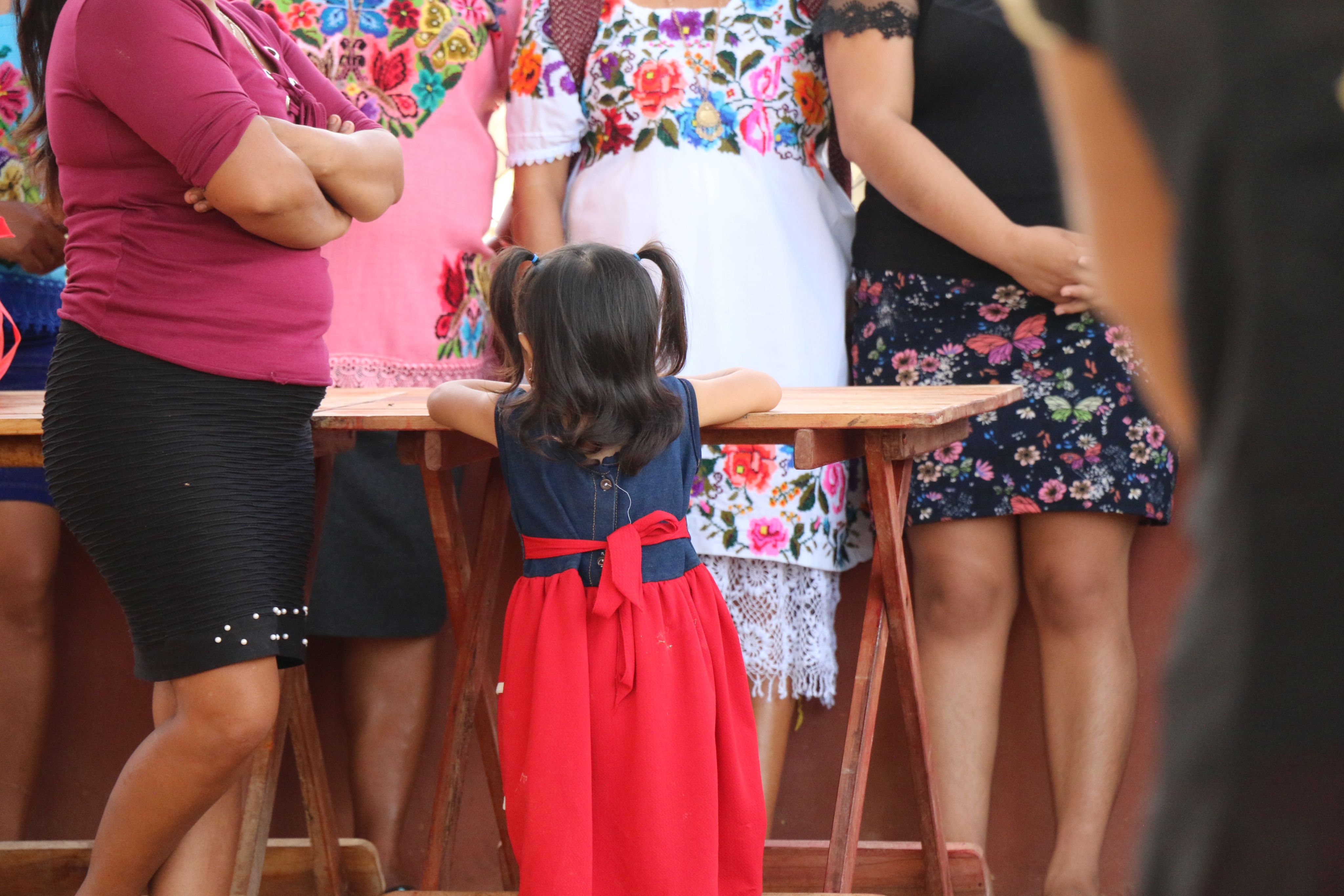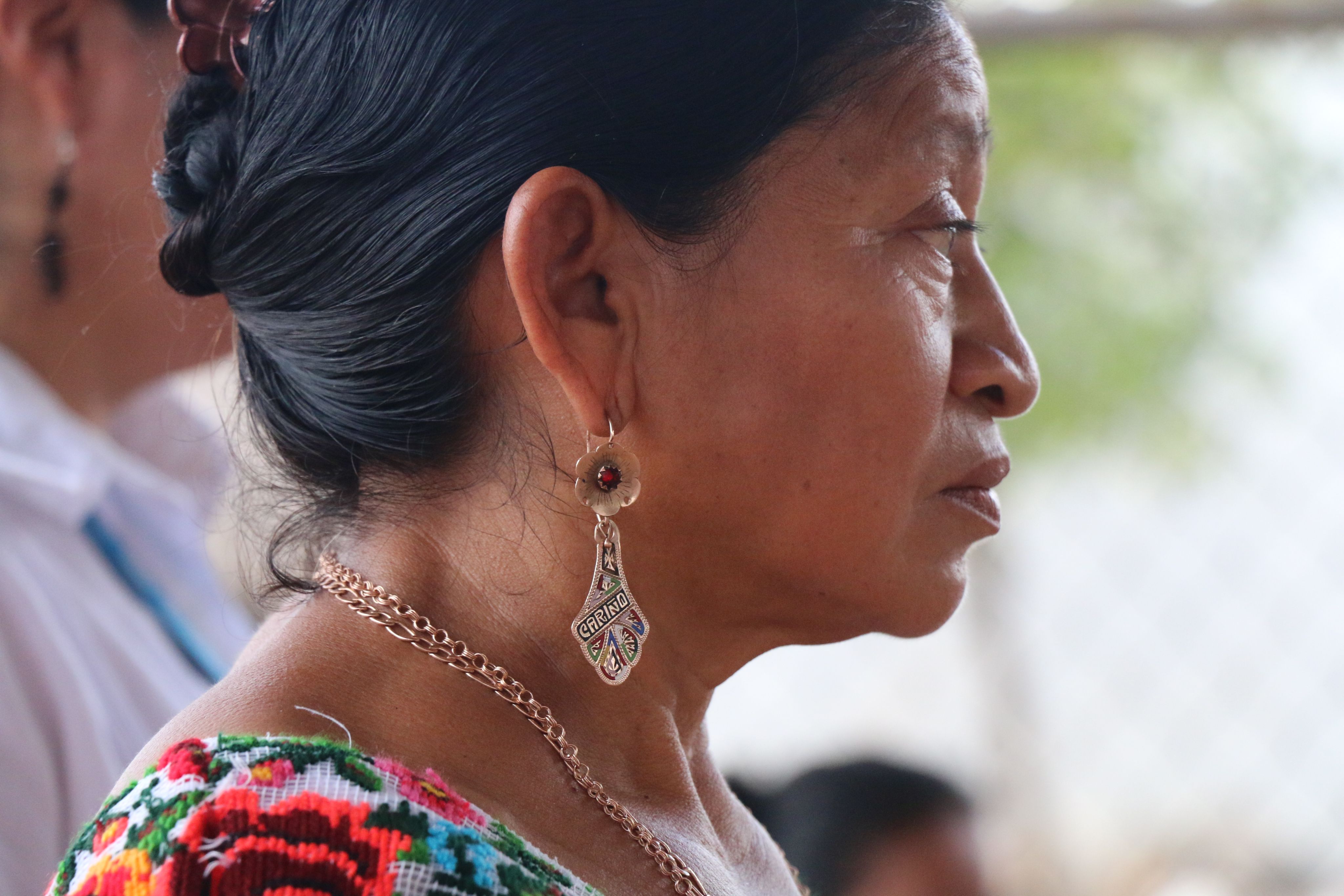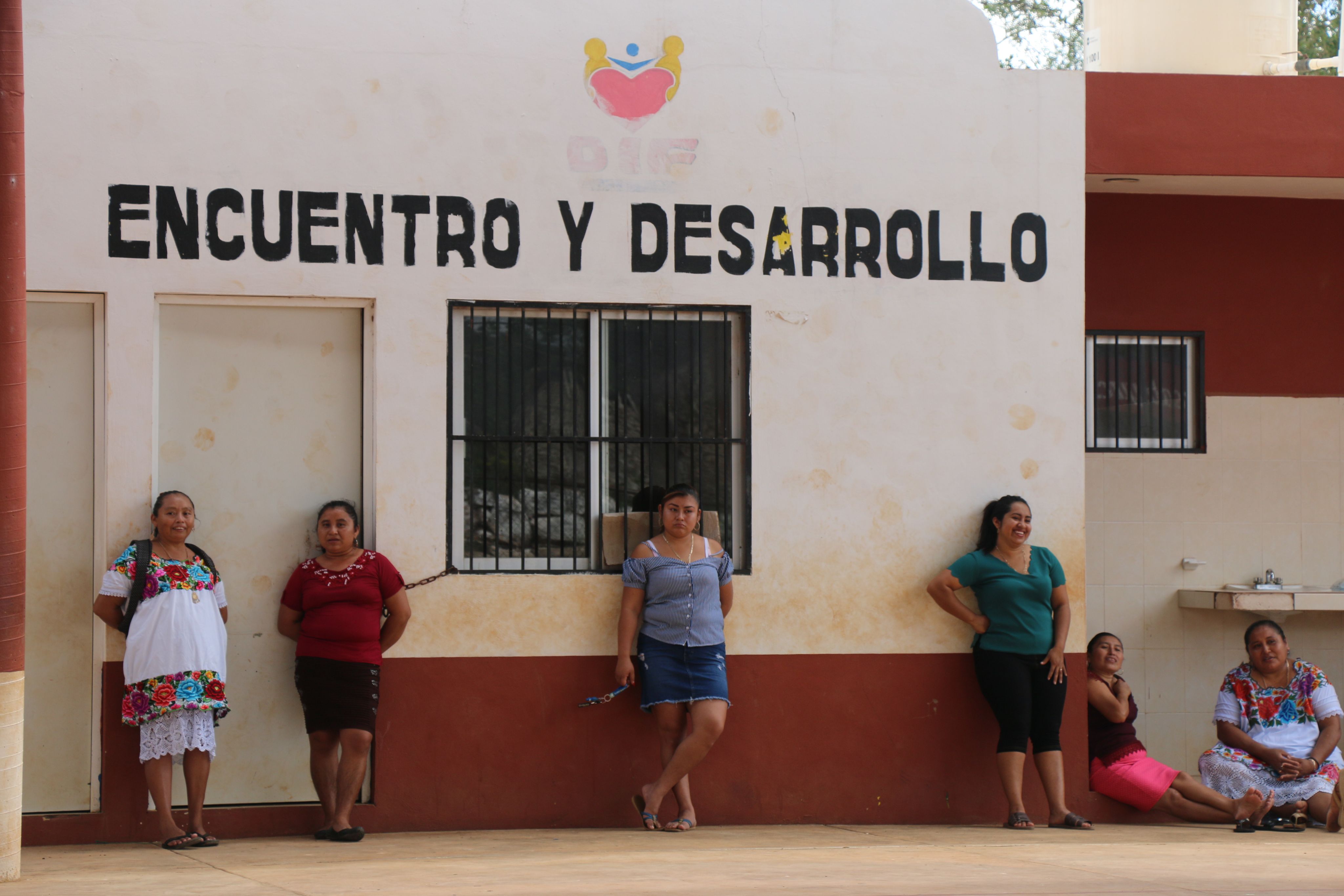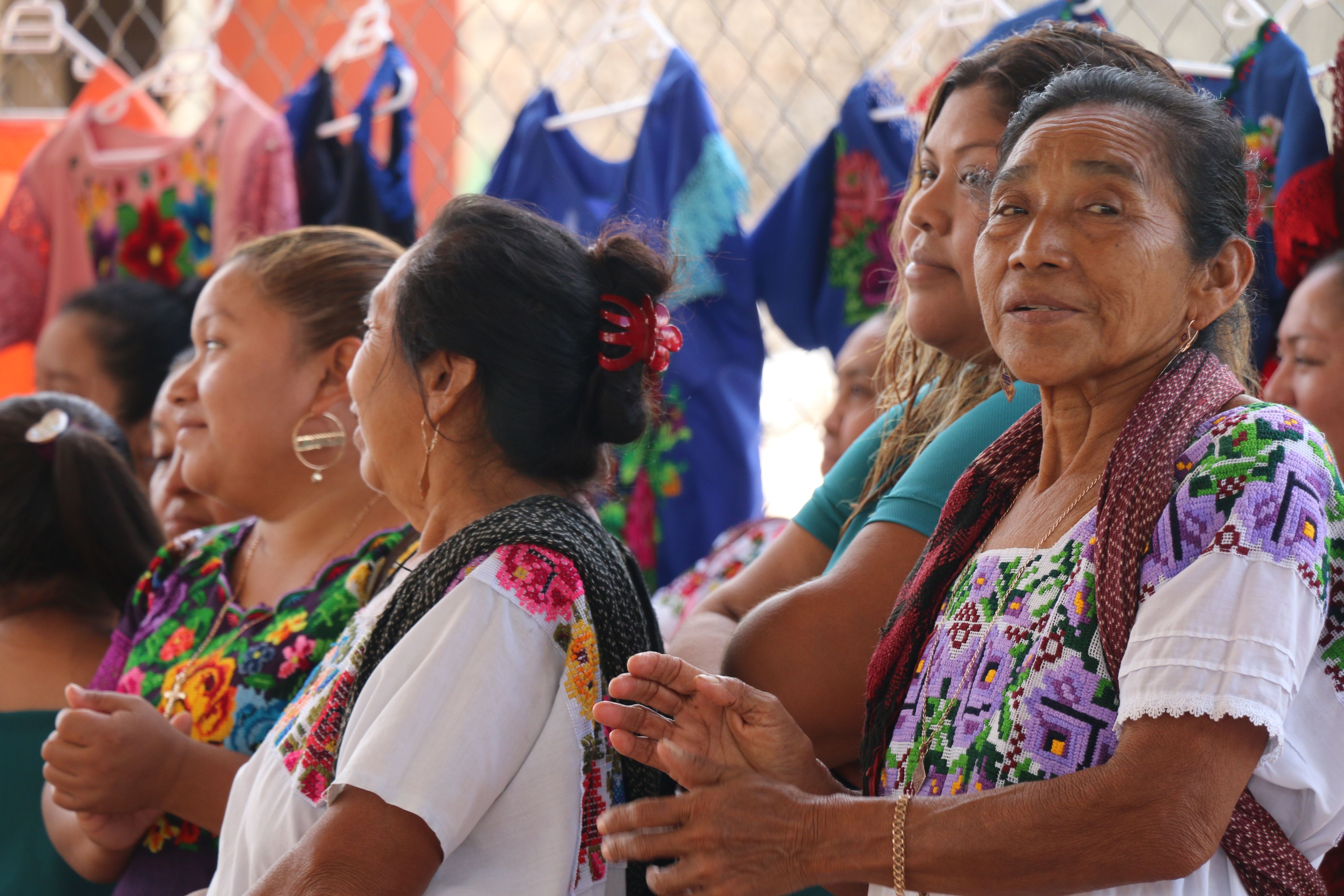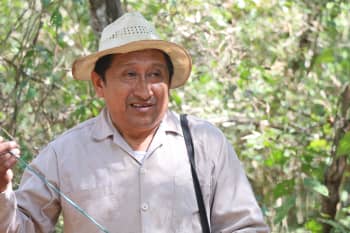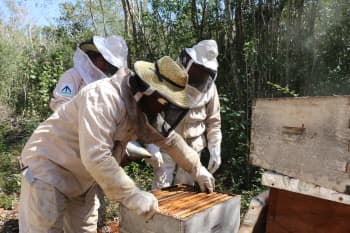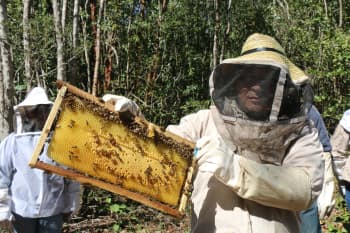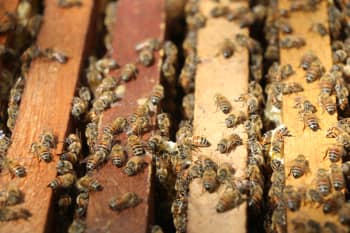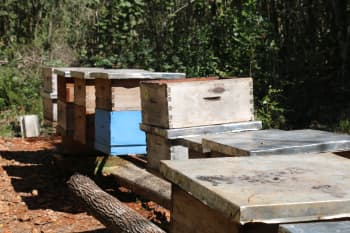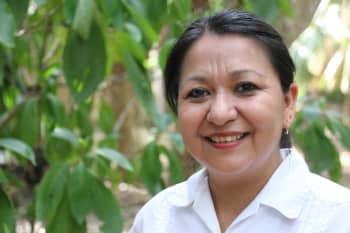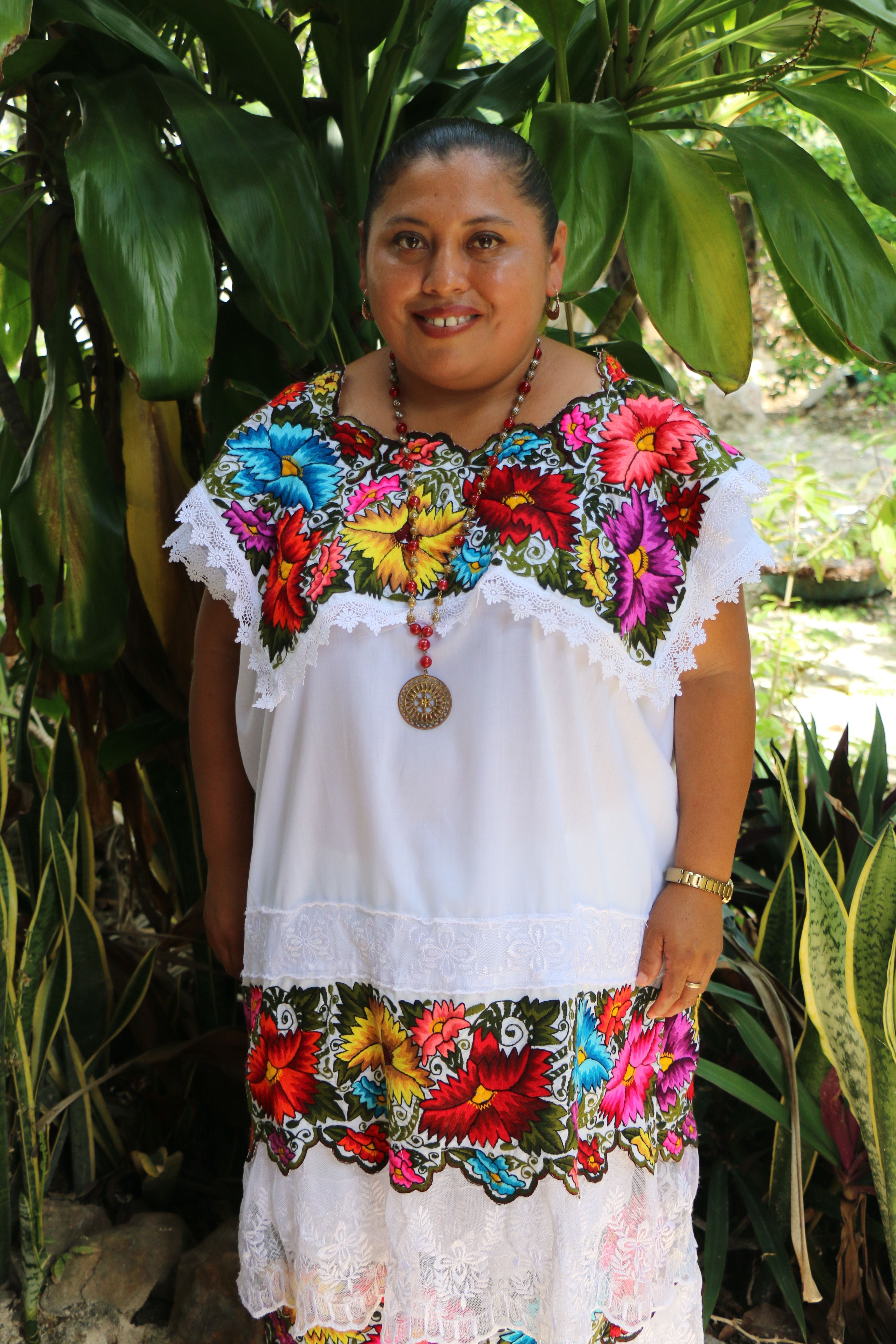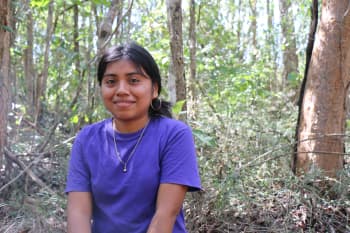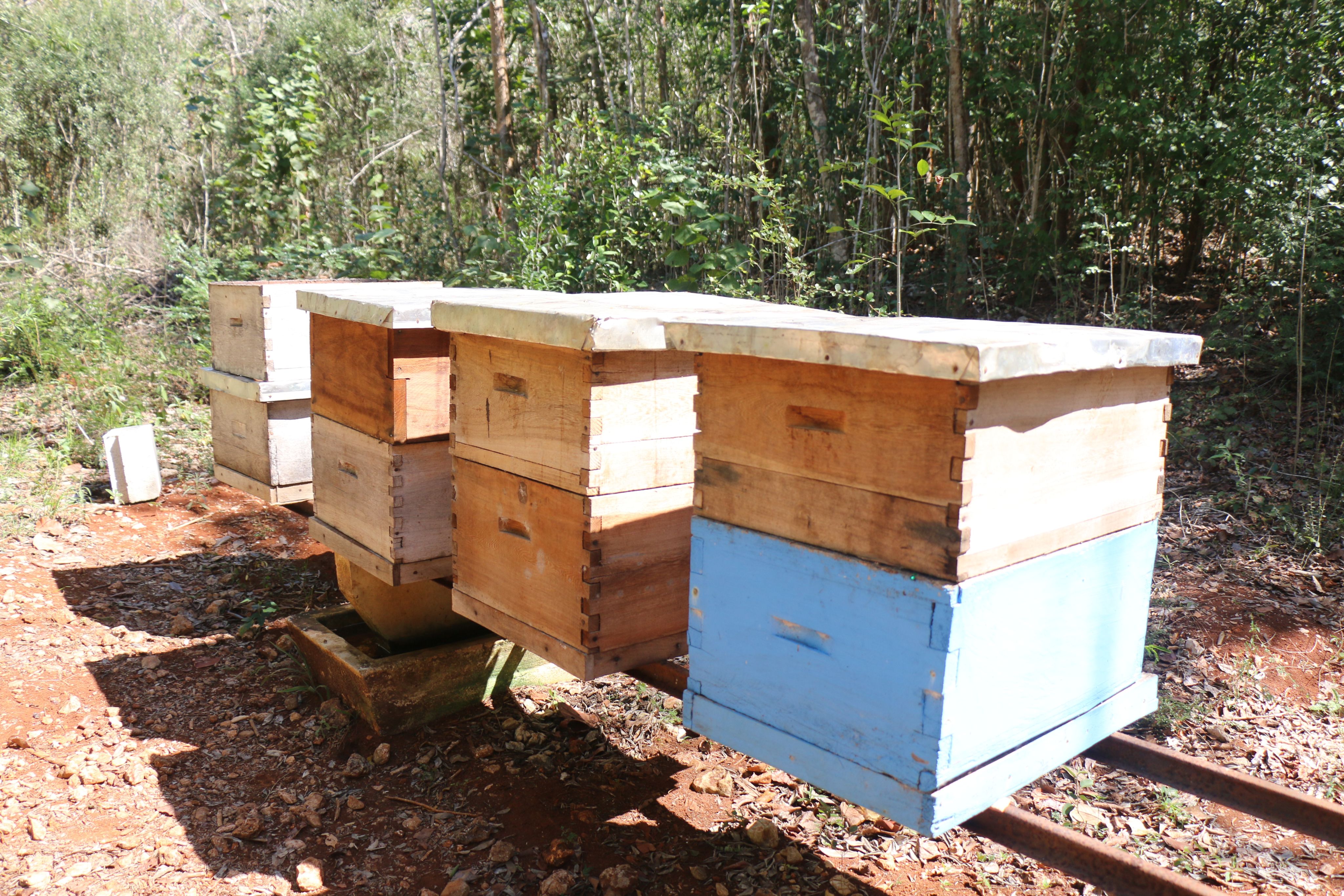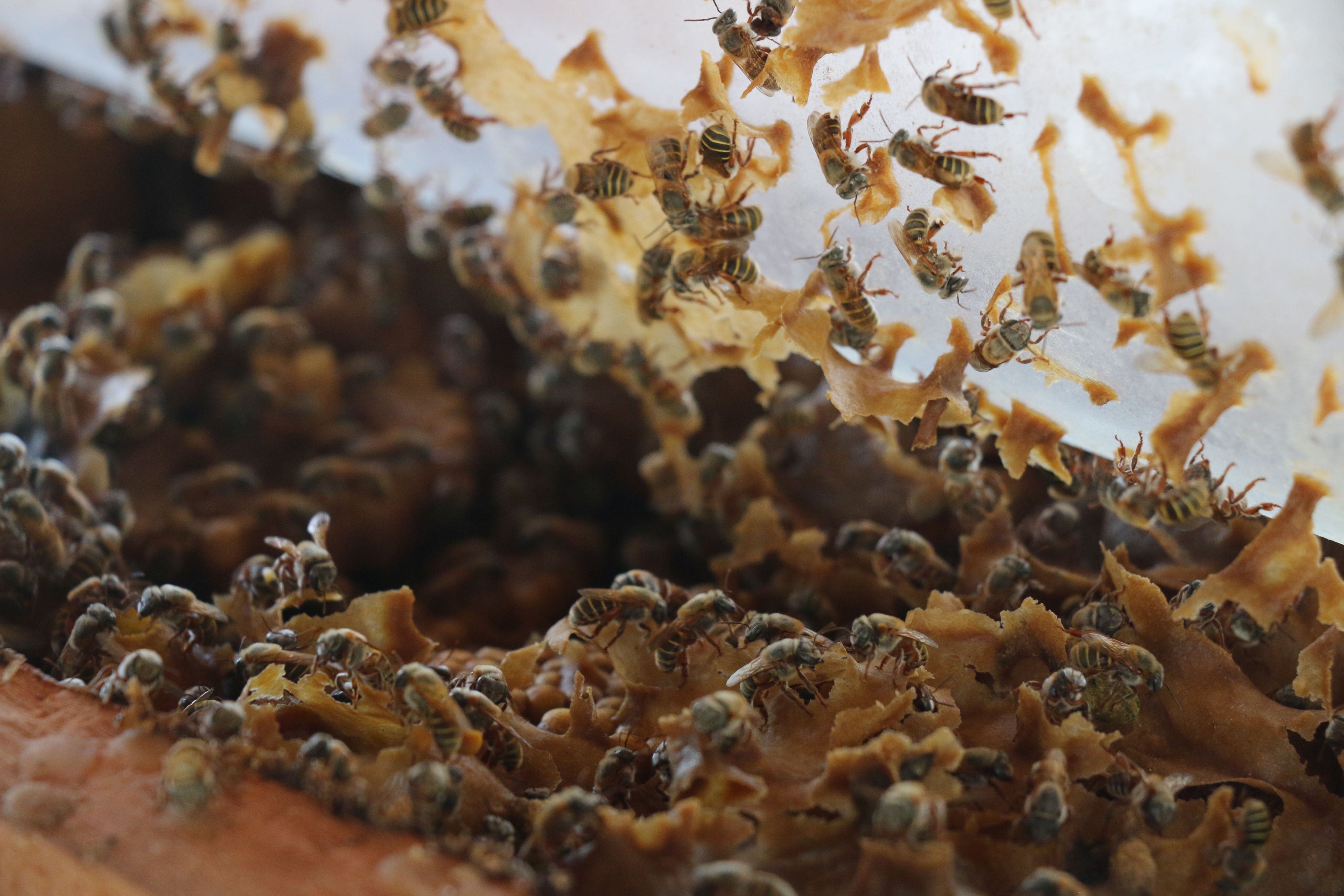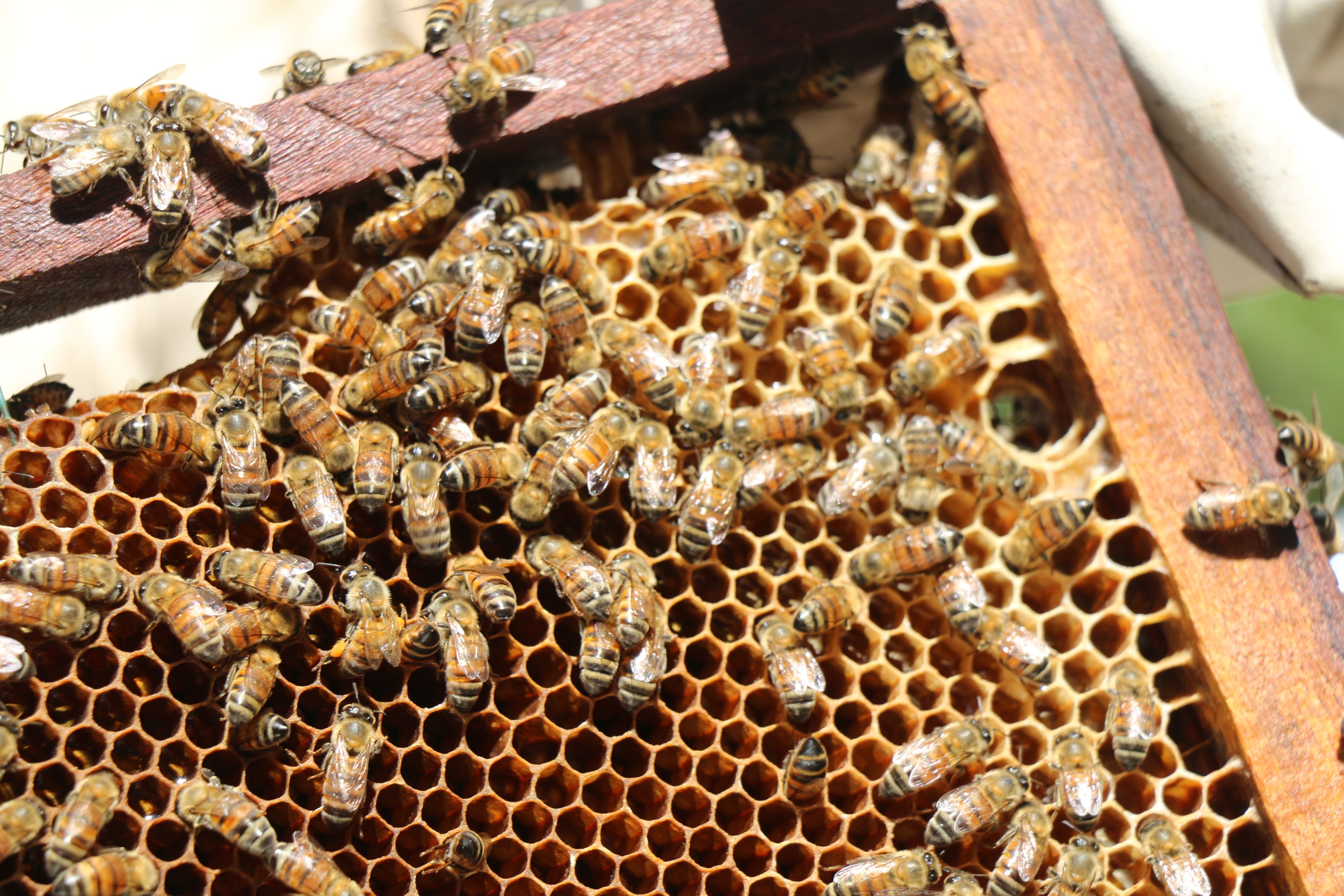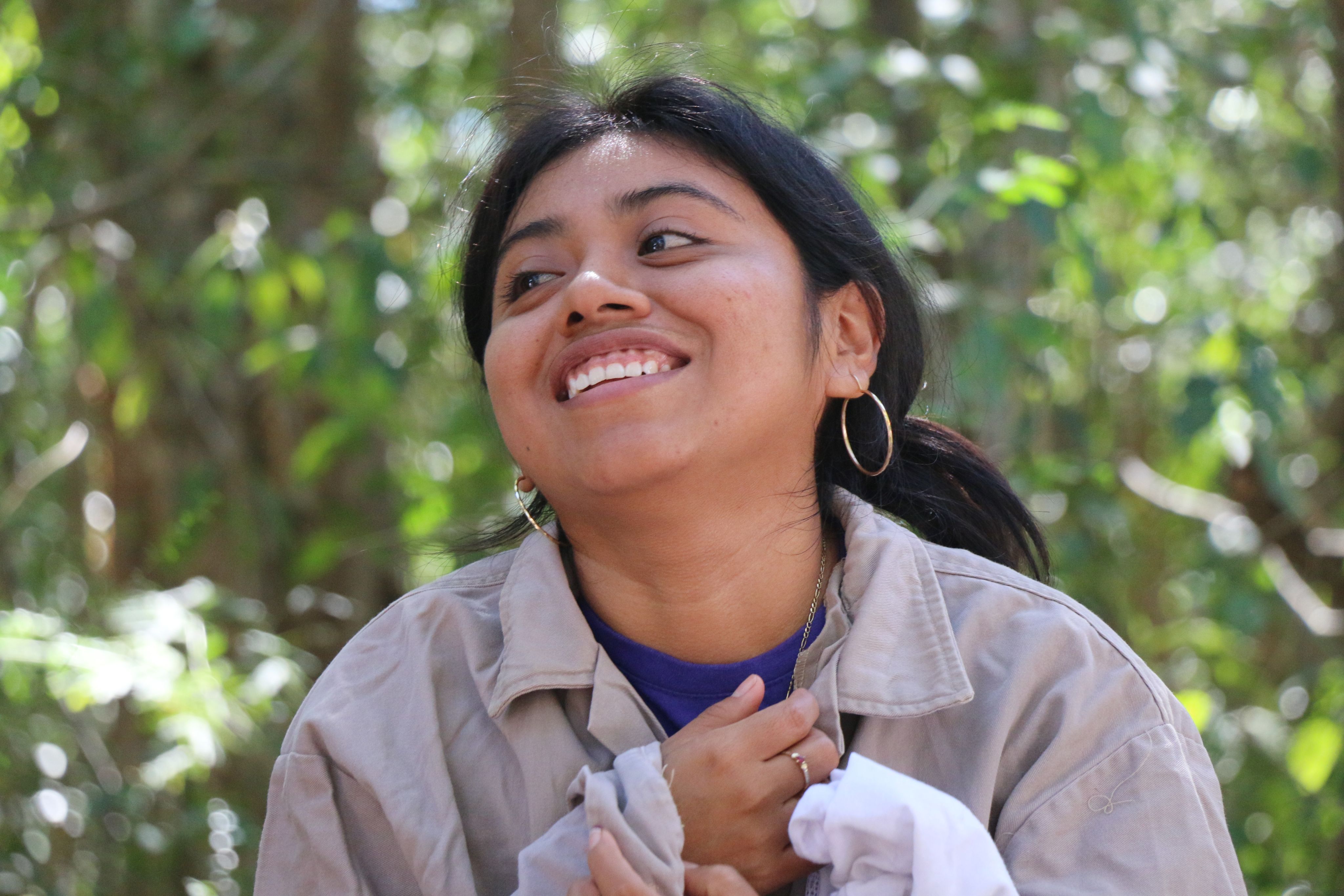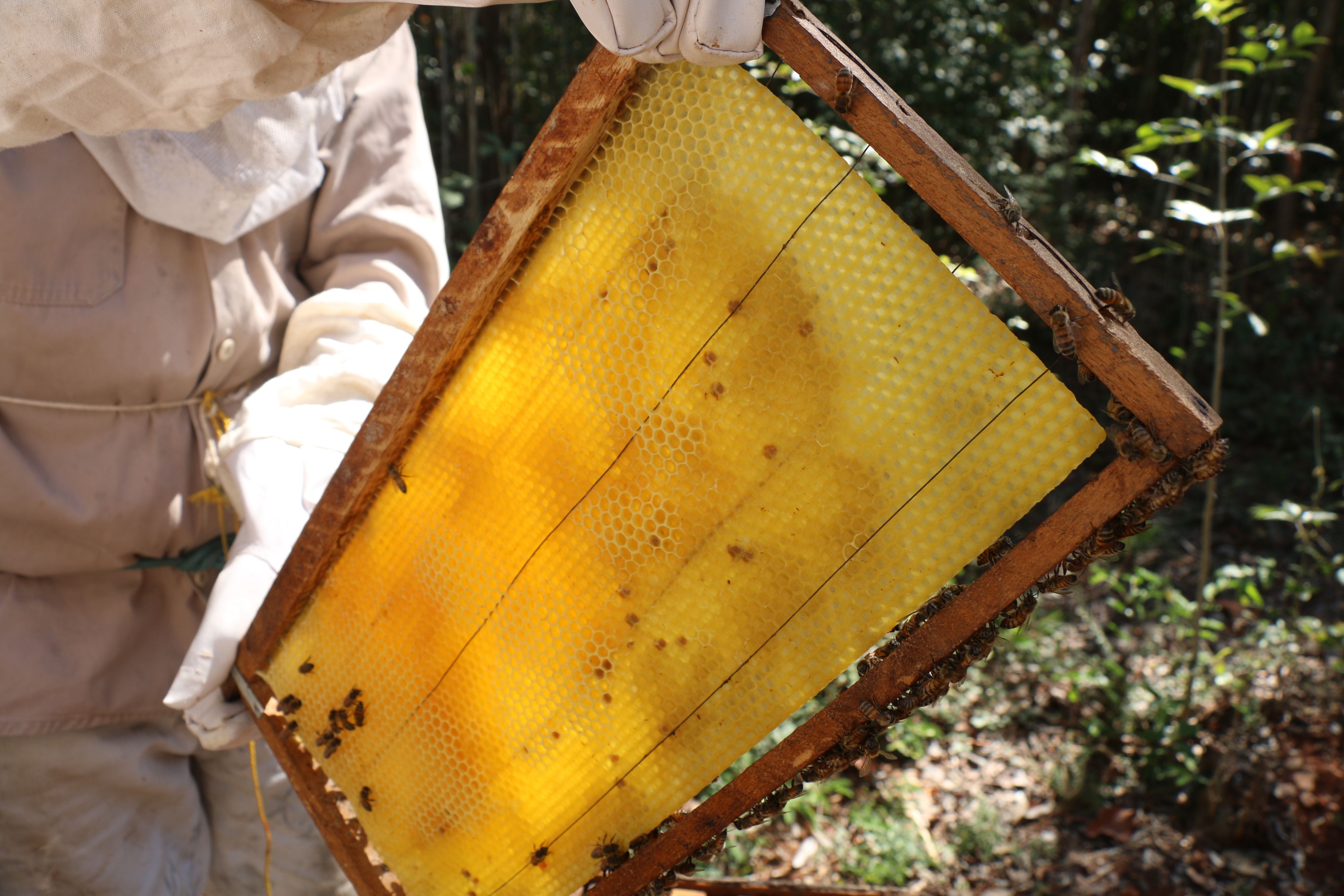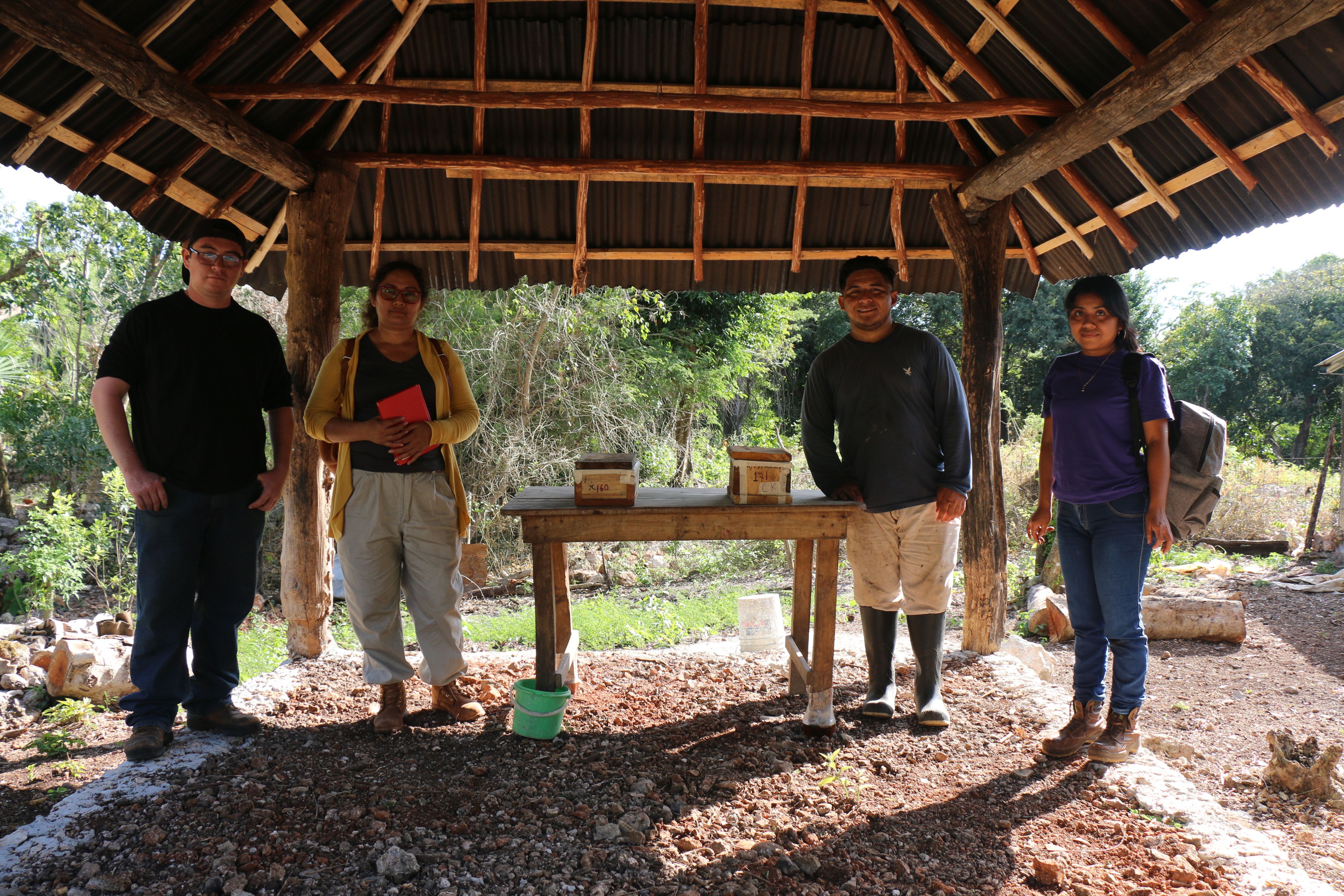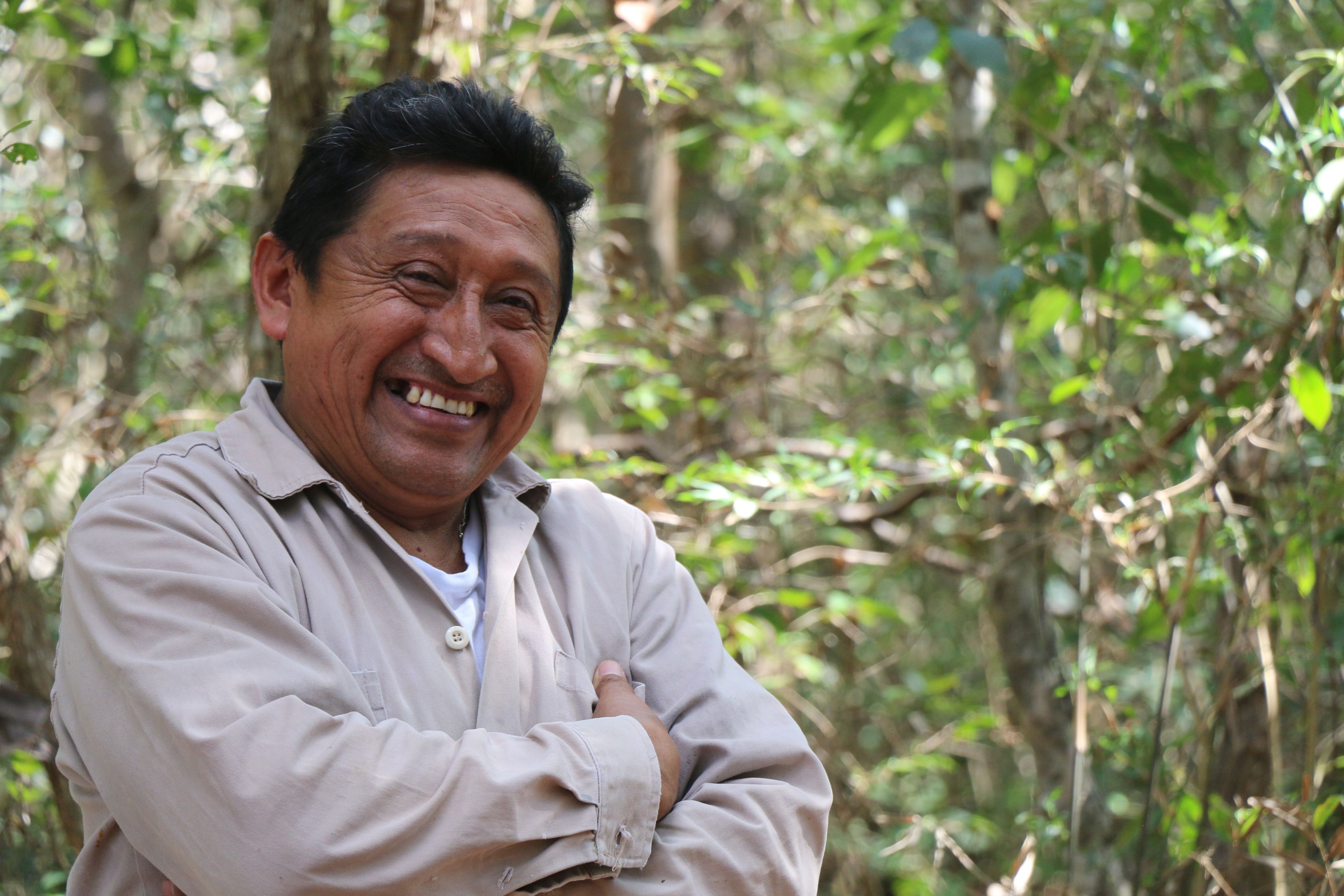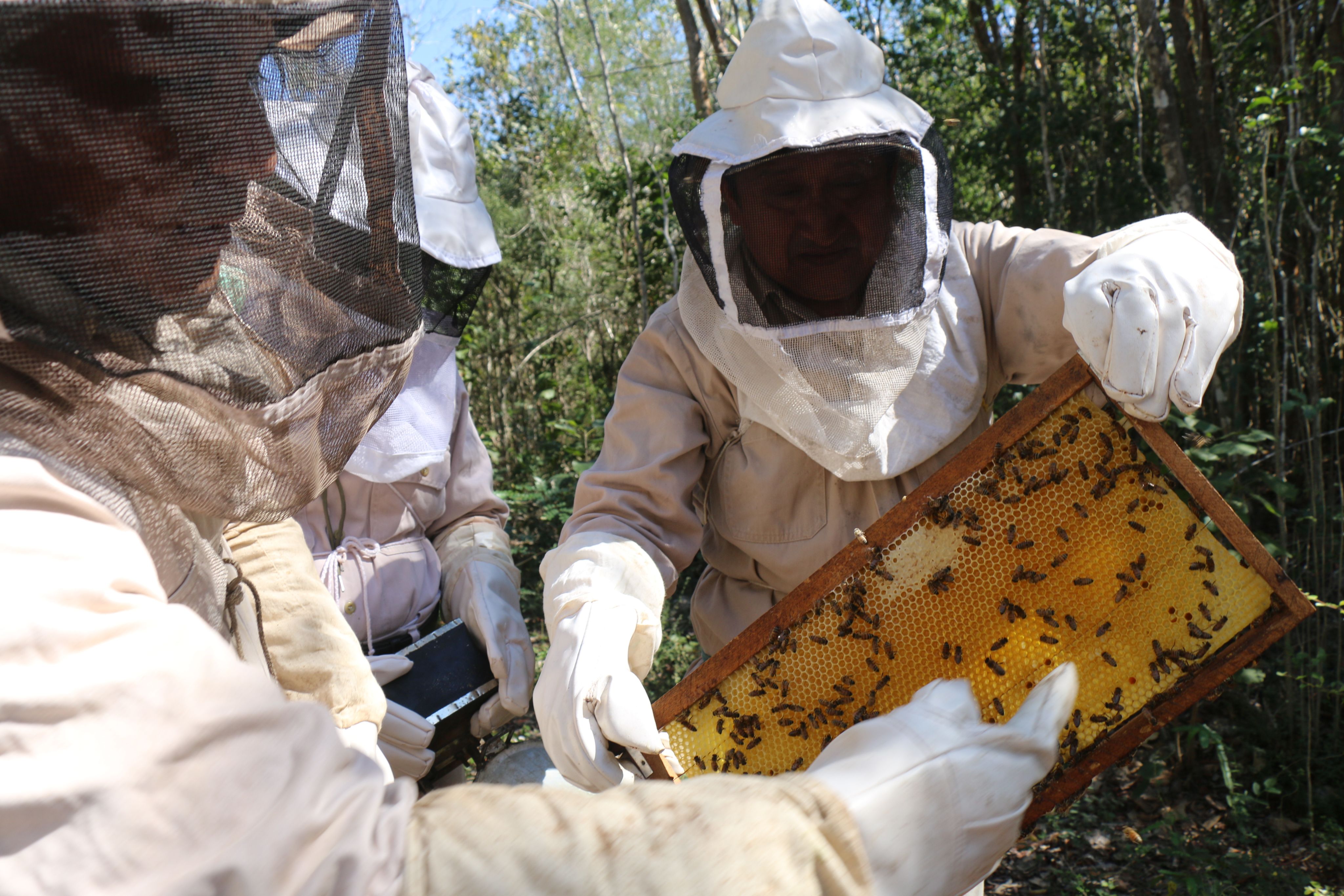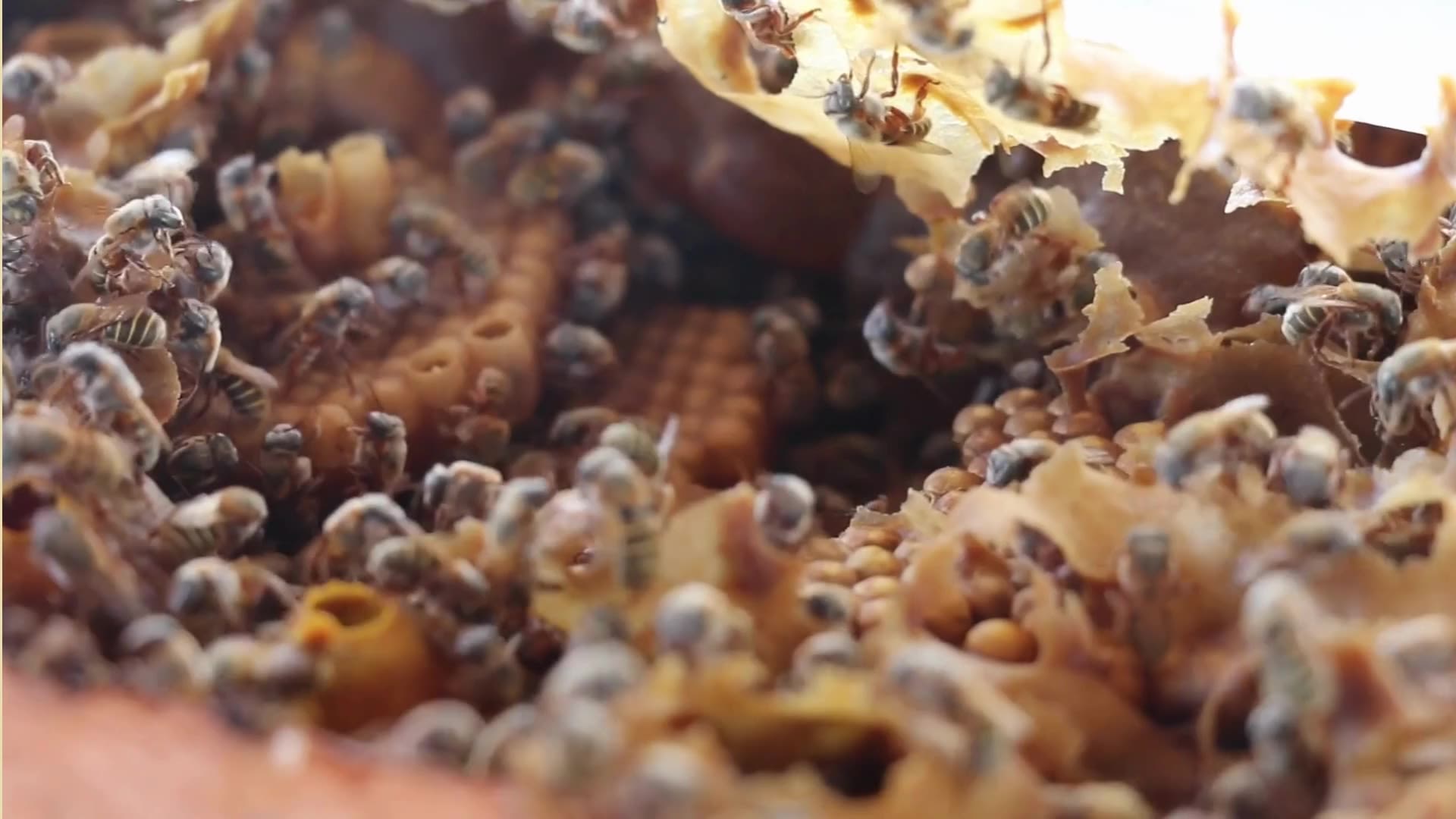
Relentless midday heat and the ever-enchanting humming of bees is surrounding the beehive of “Las Vecinas Meliponas”, an association of women beekeepers located in the village of Tzuacacab in Yucatán, Mexico.
Berta Silvia Canul Diaz, 56, heads the group “Las Vecinas Meliponas” (english: The Melipona neighbours), an association of women beekeepers located in the village of Tzuacacab in Yucatán, Mexico. © Photo by Roxana Auhagen
Berta Silvia Canul Diaz, 56, heads the group “Las Vecinas Meliponas” (english: The Melipona neighbours), an association of women beekeepers located in the village of Tzuacacab in Yucatán, Mexico. © Photo by Roxana Auhagen
© Photo by Roxana Auhagen
© Photo by Roxana Auhagen
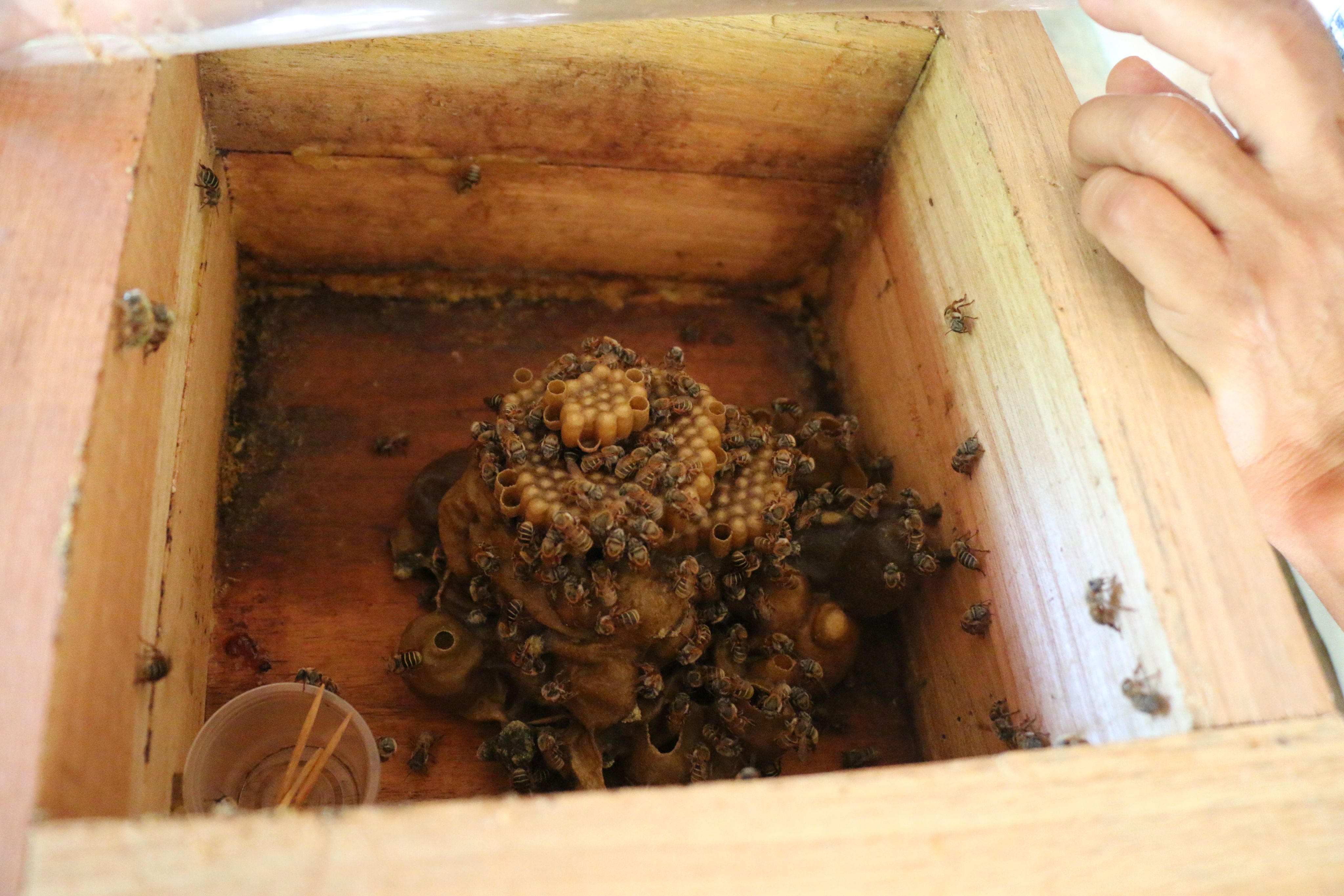

“Here is our beautiful queen. What a thrill! The fattest one is the queen – we only meet her very rarely. Now we have this great privilege that she is present.” Berta Silvia Canul Diaz, who heads the group, is full of joy at the sight of the royal presence in her hive.
“Bees to me mean life. You can see how these beautiful bees are also working, they don't rest, they are very hard workers, so that is also something we have in common as women that we don't stop working and working and working”, she says, laughing.
Xunankab – The "lady bee" as a key actor in forest conservation
Berta and the other women are working on producing honey, soaps, creams, shampoos, and sweets from the Melipona bee – a rare, stingless bee, which has been cultivated for more than 3000 years by the Indigenous Maya in its natural habitat, the Yucatan peninsula. The Mayan word for Melipona bee is “Xunan’kab”, which can be translated as “lady bee”.
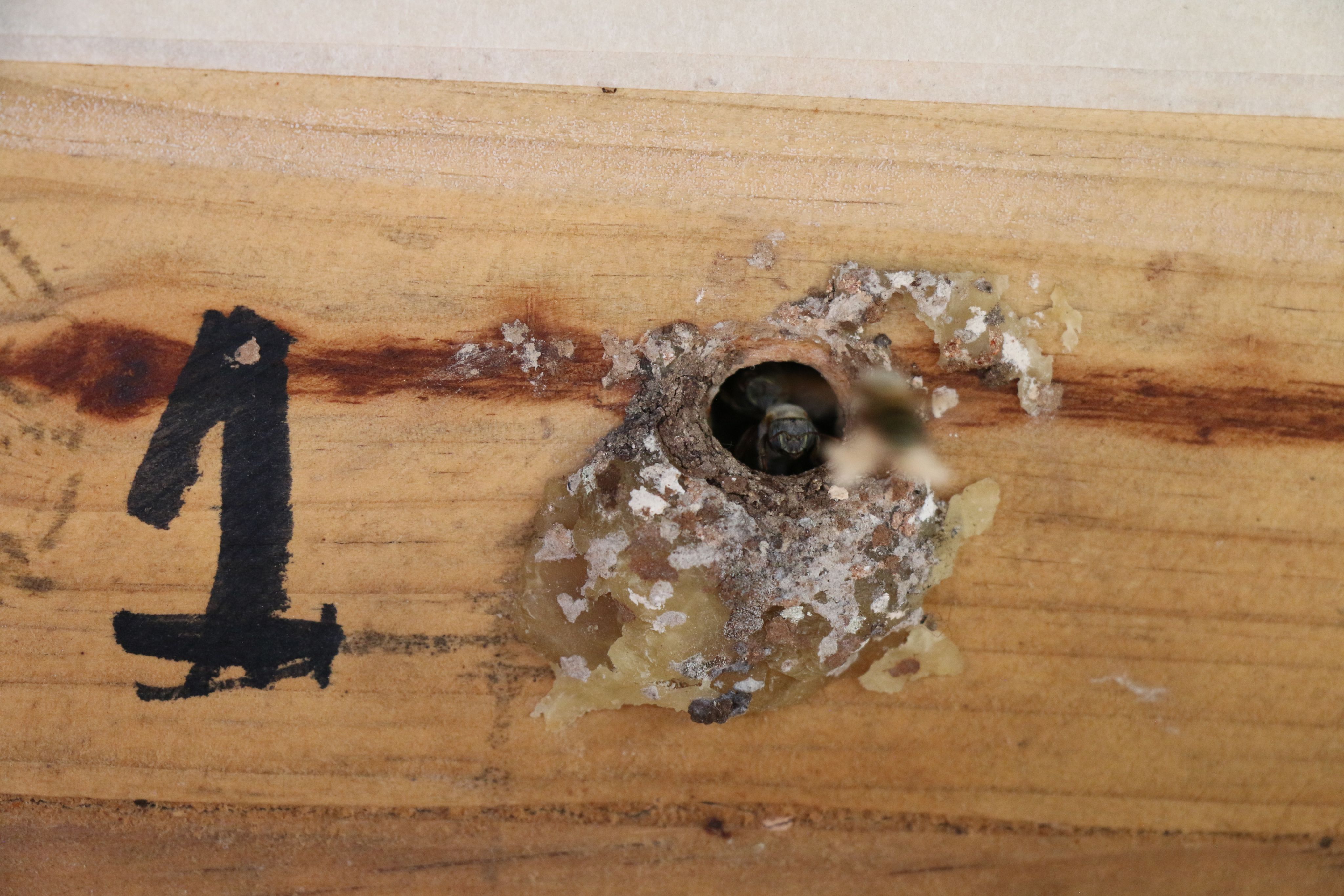
The meliponina bee contributes significantly to the reproduction of many plant species, including various forest trees and flowering plants. As they forage for nectar and pollen, these bees facilitate the cross-pollination of plants, which leads to increased fruit and seed production and is thus vital for the regeneration and growth of the forest ecosystem. Furthermore, traditional beekeeping practices in Yucatan involve placing hives in natural forest settings, encouraging sustainable land use: Rather than clearing land for agricultural activities, meliponiculturists work within the existing forested areas. This helps prevent deforestation and preserves the natural habitats for fauna and flora.
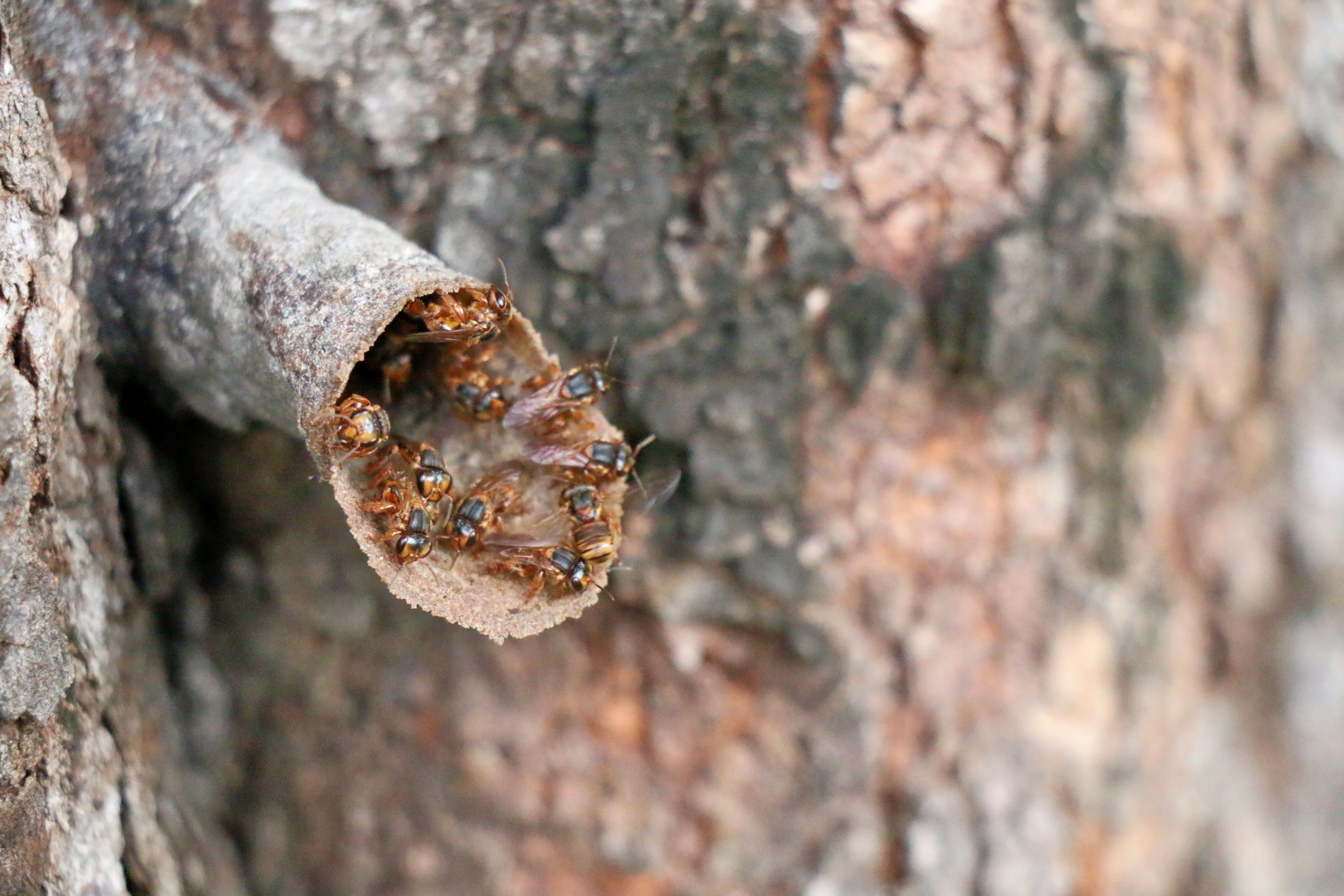
Berta and the other women are working on producing honey, soaps, creams, shampoos, and sweets from the Melipona bee. © Photo by Roxana Auhagen
Berta and the other women are working on producing honey, soaps, creams, shampoos, and sweets from the Melipona bee. © Photo by Roxana Auhagen
© Photo by Roxana Auhagen
© Photo by Roxana Auhagen
© Photo by Roxana Auhagen
© Photo by Roxana Auhagen
© Photo by Roxana Auhagen
© Photo by Roxana Auhagen
© Photo by Roxana Auhagen
© Photo by Roxana Auhagen
© Photo by Roxana Auhagen
© Photo by Roxana Auhagen
© Photo by Roxana Auhagen
© Photo by Roxana Auhagen
© Photo by Roxana Auhagen
© Photo by Roxana Auhagen
© Photo by Roxana Auhagen
© Photo by Roxana Auhagen
Through their work with bees, many beekeepers like Berta, develop a deep connection with the environment and become advocates for forest conservation – also because their livelihoods ultimately depend on the health of these ecosystems.
“I am enjoying this queen who never stops teaching us. This young lady is the bearer of life, of peace, of tranquility. Every day we are falling more in love with this activity because we’re aware of the great benefit it brings to humanity,” says Berta, gently caressing the bee boxes.
Map: Fabiola Perianza Gómez; Joana Elizabeth Carrillo Burgos / SDS Yucatán
Map: Fabiola Perianza Gómez; Joana Elizabeth Carrillo Burgos / SDS Yucatán
Empowered women through beekeeping
The 56-year-old engages more women in beekeeping: “I dream of seeing empowered women who are not afraid of the many challenges that we are currently experiencing. This concerns especially our children and the next generations.”
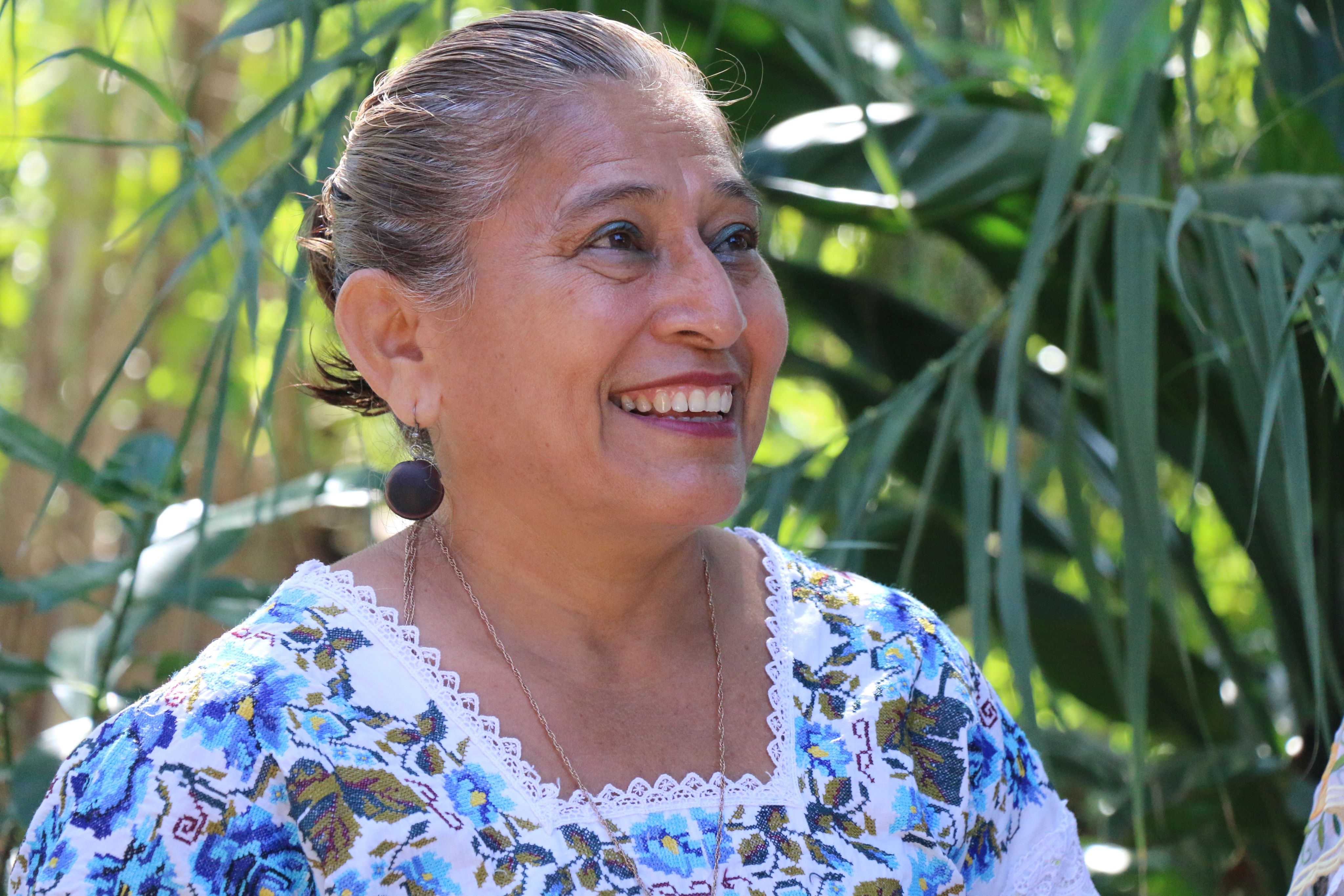
Her colleague Wendy concurs: “I feel that there are women who really like beekeeping, but they are somehow embarrassed – maybe they see it as a man's job. How can that be? To tell you the truth, I like to go to the fields, I like to sow in the little pieces of land that we have,” she proudly states.
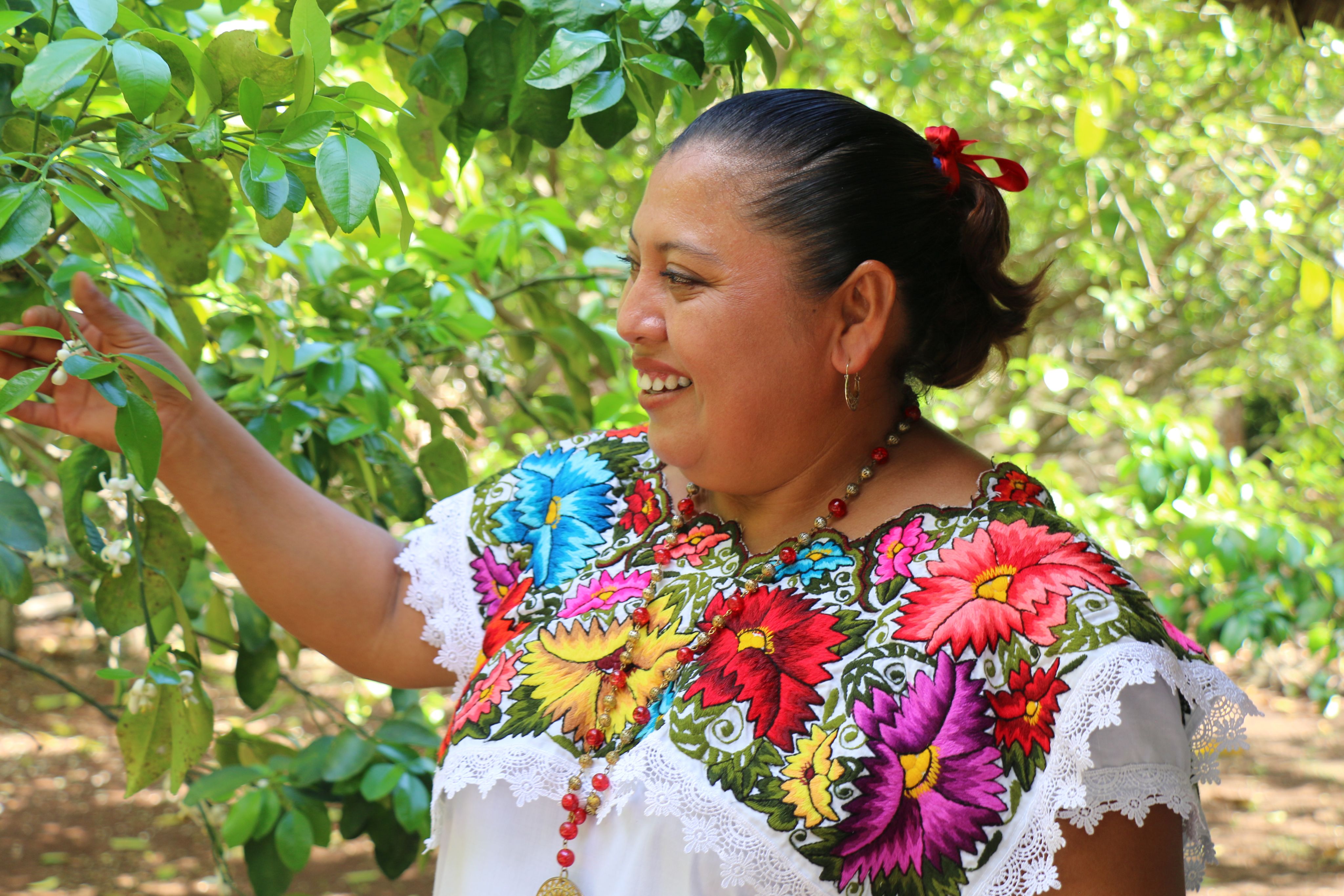
Berta, Wendy, and their association are supported by the local governing body of the project, the Intermunicipal Board of the Puuc region (JIBIOPUUC), Yucatán’s Ministry of Sustainable Development (SDS) and WWF Mexico which are working together with 11 municipalities in the region mostly constituted of Indigenous Mayas. The activities are also supported by UNDP and funded by the Government of Norway through a pledge to the Governors’ Climate and Forests Task Force (GCFTF). The project focuses on one of the most important forest reserves, the Región Biocultural del Puuc, which forms part of a larger biocultural corridor extending into Central America. The project works on the reserve’s forest management program and is strengthening sustainable production alternatives through beekeeping, payments for environmental services and milpa, a millennial agricultural and traditional agroforestry system practiced by the Maya.
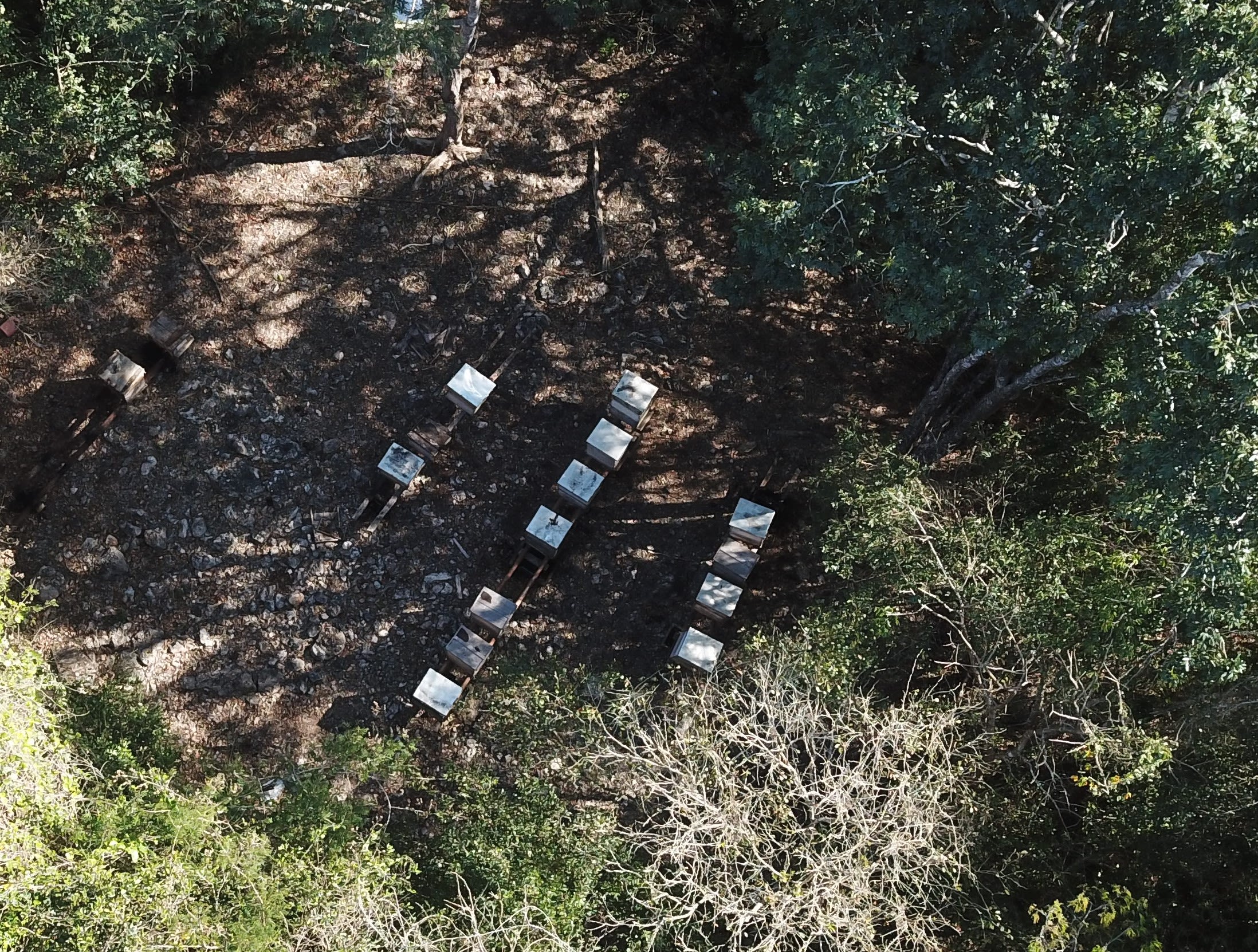
Within beekeeping, the project has achieved a participation of 60% women engaged in meliponiculture and about 25% of women engaged in apiculture. As Minneth Medina, Jibiopuuc’s director states: “These numbers may sound low, but they really represent the women who carry out this activity. There are still many challenges, of course – for example the issue of machismo, especially in Indigenous communities, where customs and traditions are very strong.”
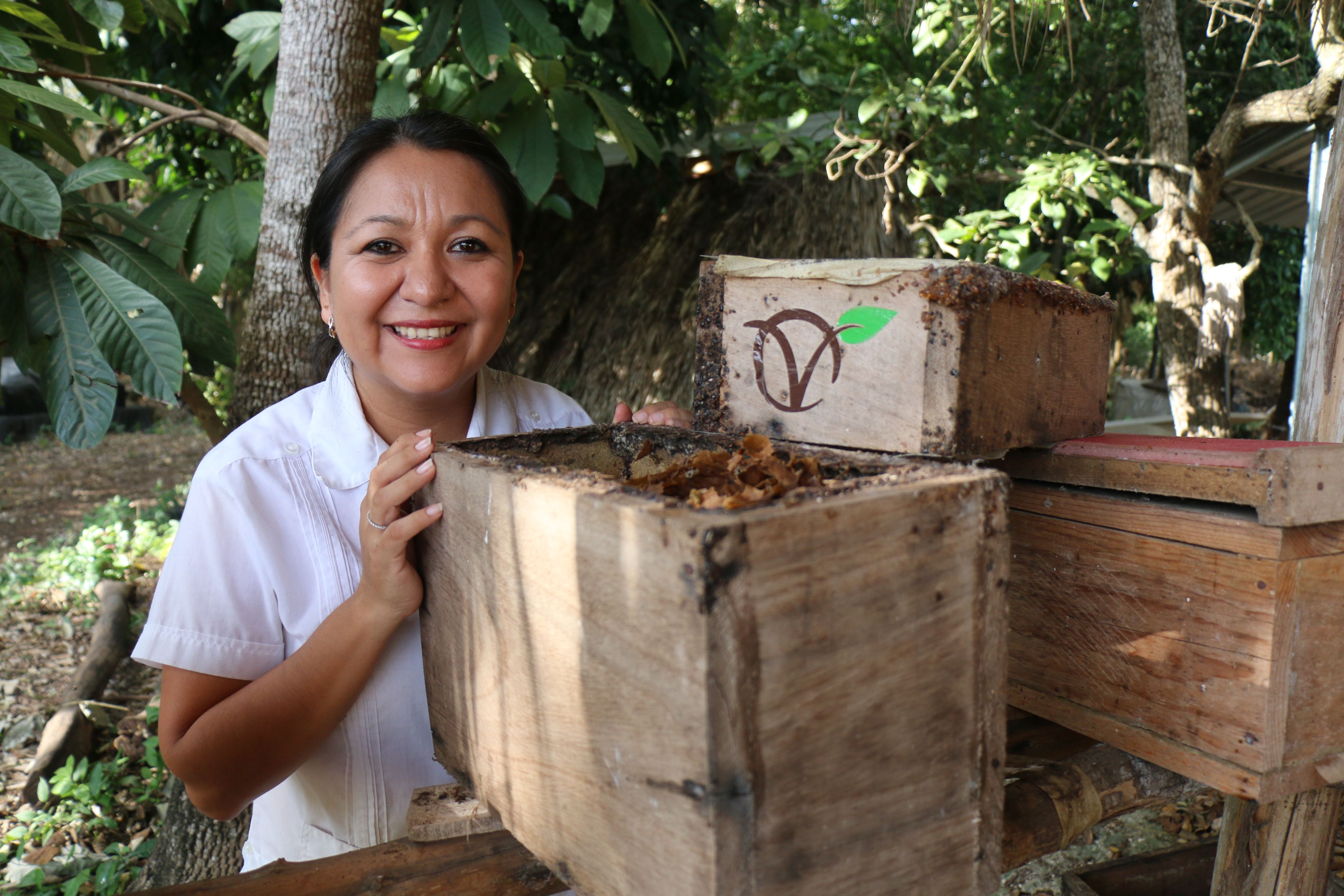
© Photo by Roxana Auhagen
© Photo by Roxana Auhagen
© Photo by Roxana Auhagen
© Photo by Roxana Auhagen
© Photo by Roxana Auhagen
© Photo by Roxana Auhagen
© Photo by Roxana Auhagen
© Photo by Roxana Auhagen
© Photo by Roxana Auhagen
© Photo by Roxana Auhagen
© Photo by Roxana Auhagen
© Photo by Roxana Auhagen
© Photo by Roxana Auhagen
© Photo by Roxana Auhagen
© Photo by Roxana Auhagen
© Photo by Roxana Auhagen
© Photo by Roxana Auhagen
© Photo by Roxana Auhagen
Biocultural heritage – honoring both biodiversity and cultural traditions
Other challenges faced by Indigenous Maya communities in Yucatan include economic restraints, as Florentino Poot Canul, an apiculturist from the village of Yaxcabá illustrates: “Beekeeping is a very good activity, and I want to transmit that to my children. We want to move forward but we can’t do it on our own. We need the support of government institutions, as well as people from other places who want to join us in this cause. A queen bee costs 250 pesos [approx. 15 USD] or more and we simply don't have the economic power to invest.”
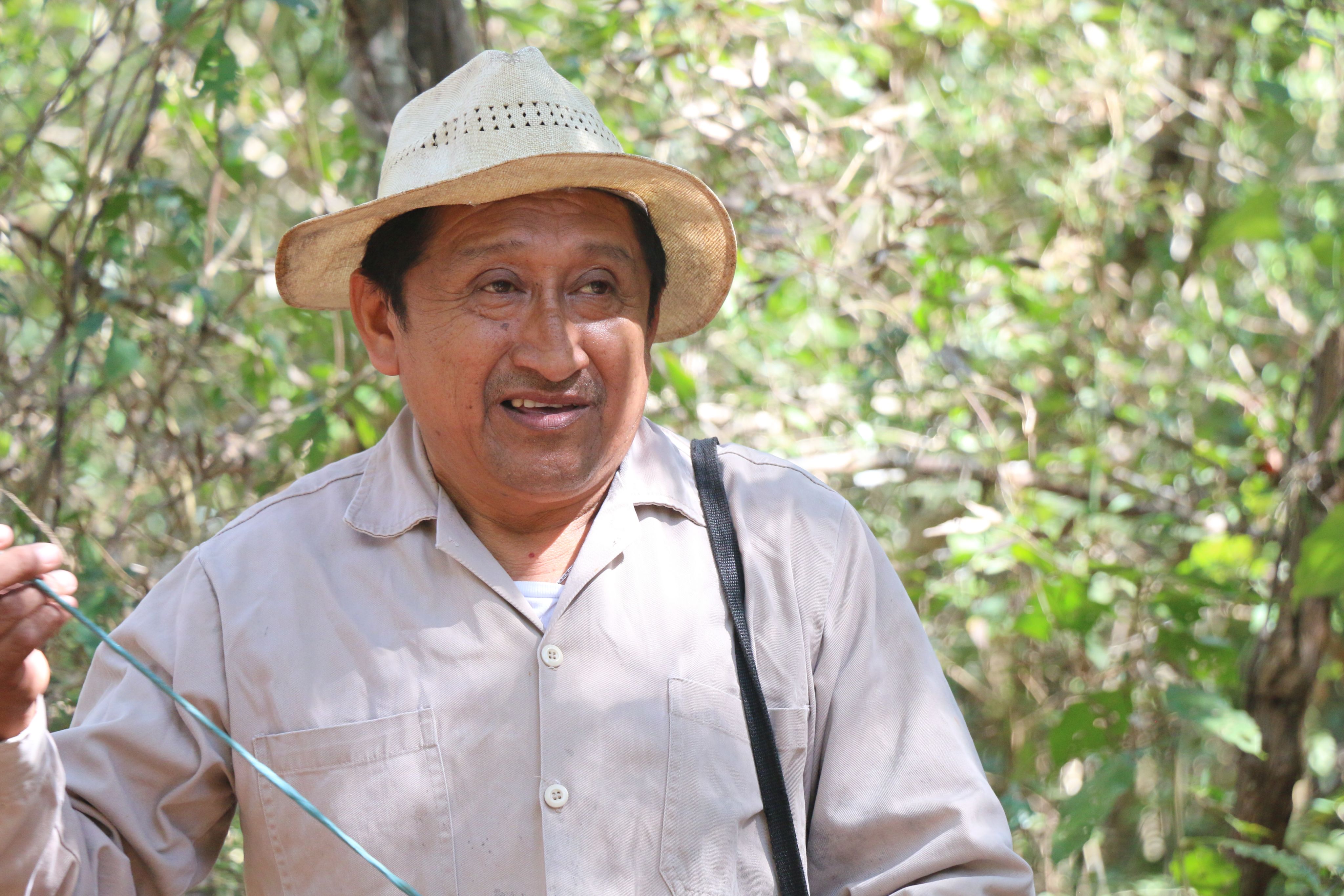
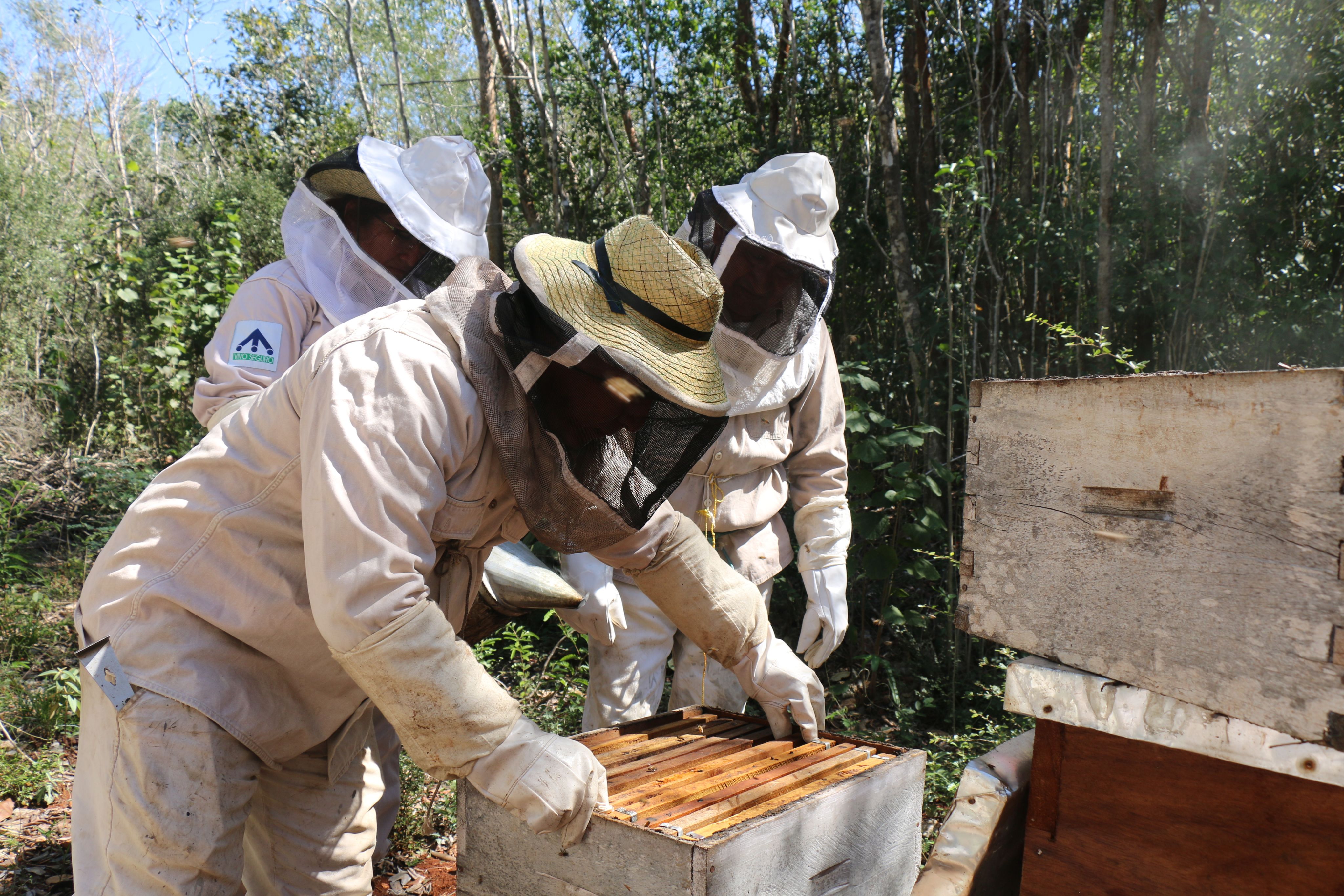
The project mostly works with Mayan Indigenous communities who are threatened in their way of life and located in areas of high rural marginalization. Oftentimes, they face social, economic, and cultural challenges, which range from unclear land tenure systems and a loss of ancestral lands, to limited access to education, healthcare, and basic infrastructure as well as the preservation and revitalization of cultural practices and traditional knowledge.
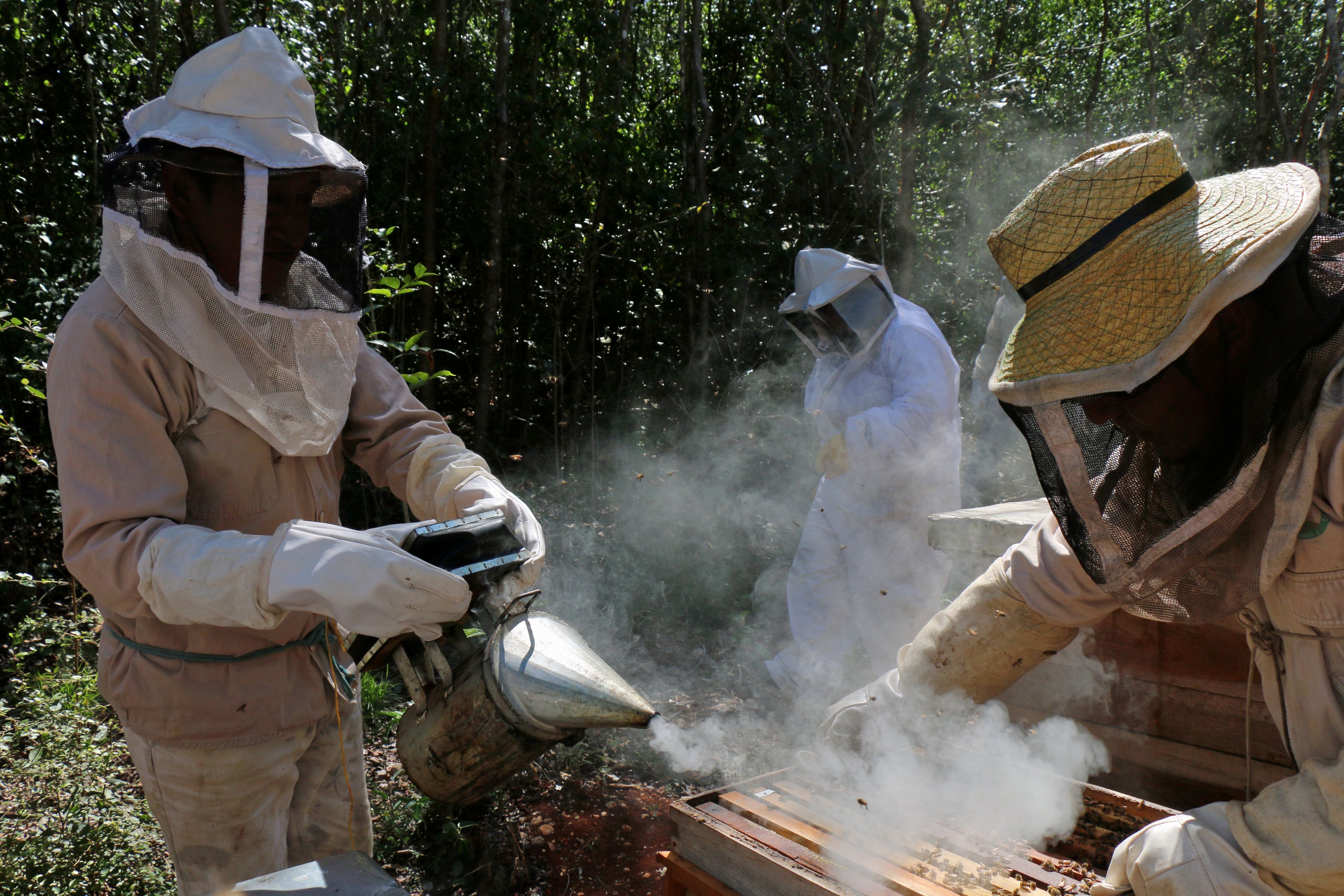
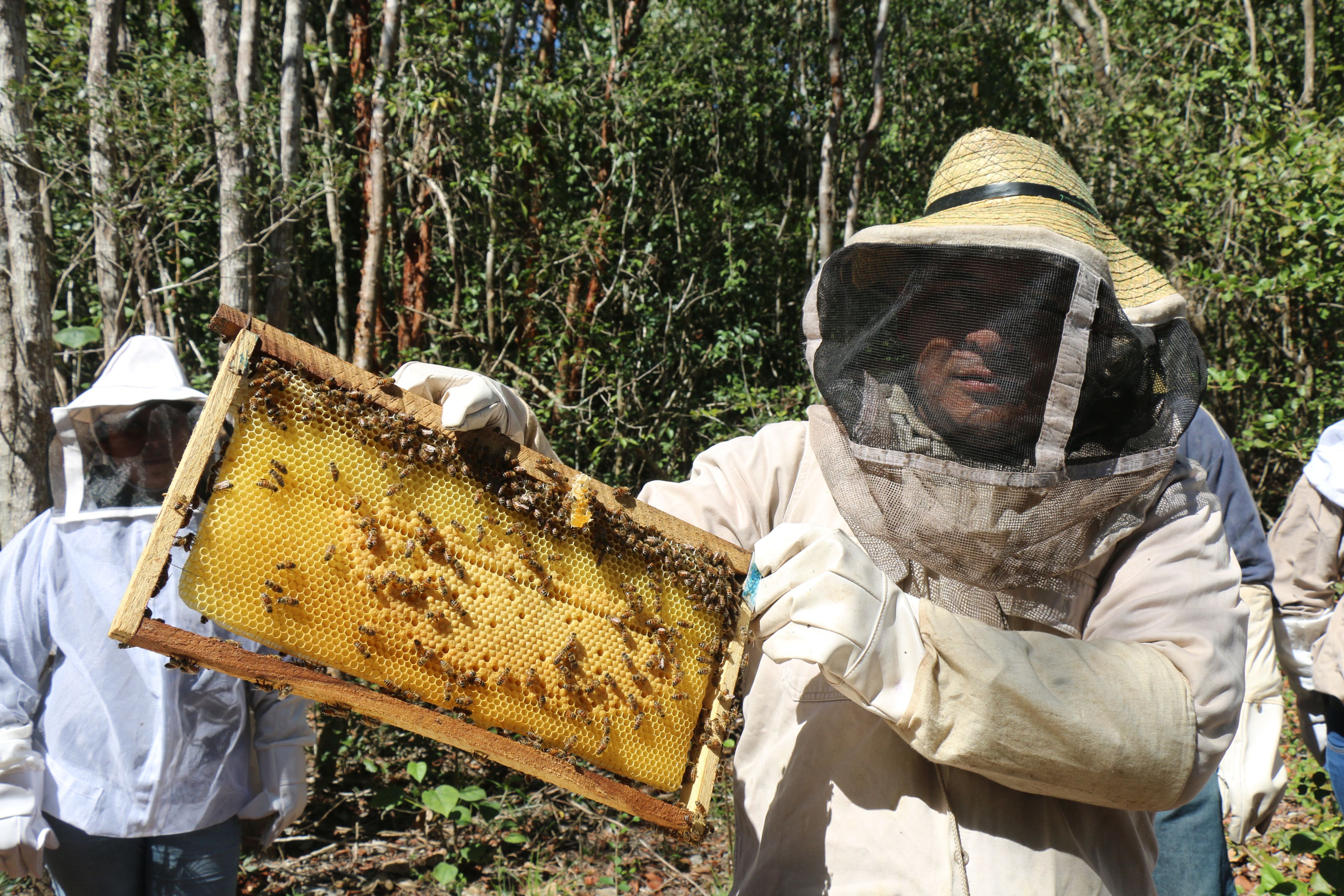
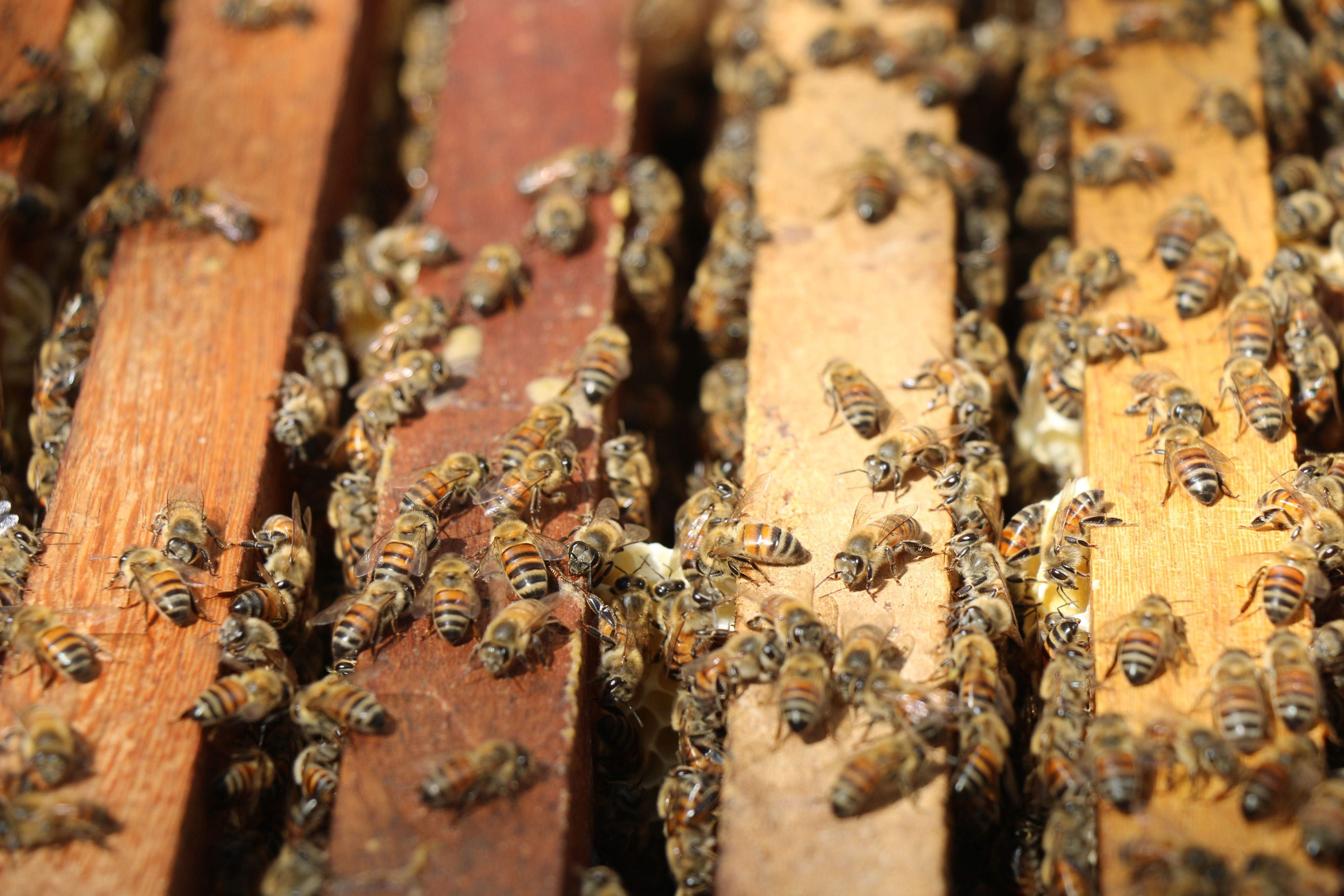
Having the beekeepers on board is essential to preserve Yucatan’s last remaining forest, the Puuc Biocultural Reserve. The concept of biocultural heritage equally honors biodiversity and cultural practices central to the people who live in this region – as well as their millennial coexistence.
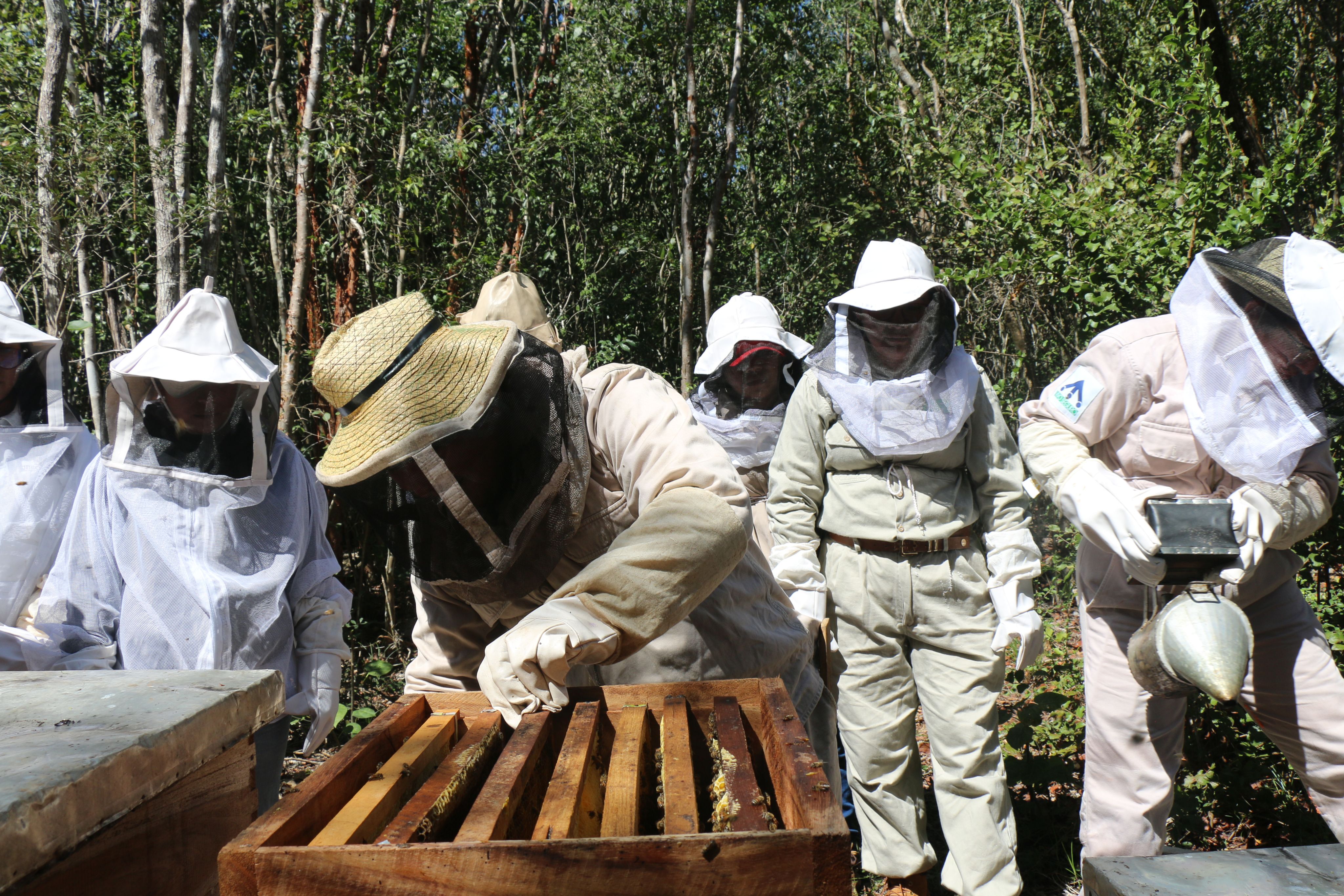
Even though meliponiculture mostly has positive effects on forest conservation in the region, like any human activity, unsustainable beekeeping practices can potentially contribute to deforestation, be it directly or indirectly. Practicing responsible land management, promoting sustainable harvesting methods and agroforestry is key, as Minneth Medina highlights: "It’s essential for us to be able to work with the beekeepers and their communities to raise awareness on sustainable practices. The practice of beekeeping makes them appreciate more the need for nectar proliferation – and as such, the forest is valued more deeply. Now, when we eat honey, we can enjoy and taste the flavors, the smells, and the seasonality of the forest. The beekeepers learn that forest conservation and the preservation of resources are essential to generate income."
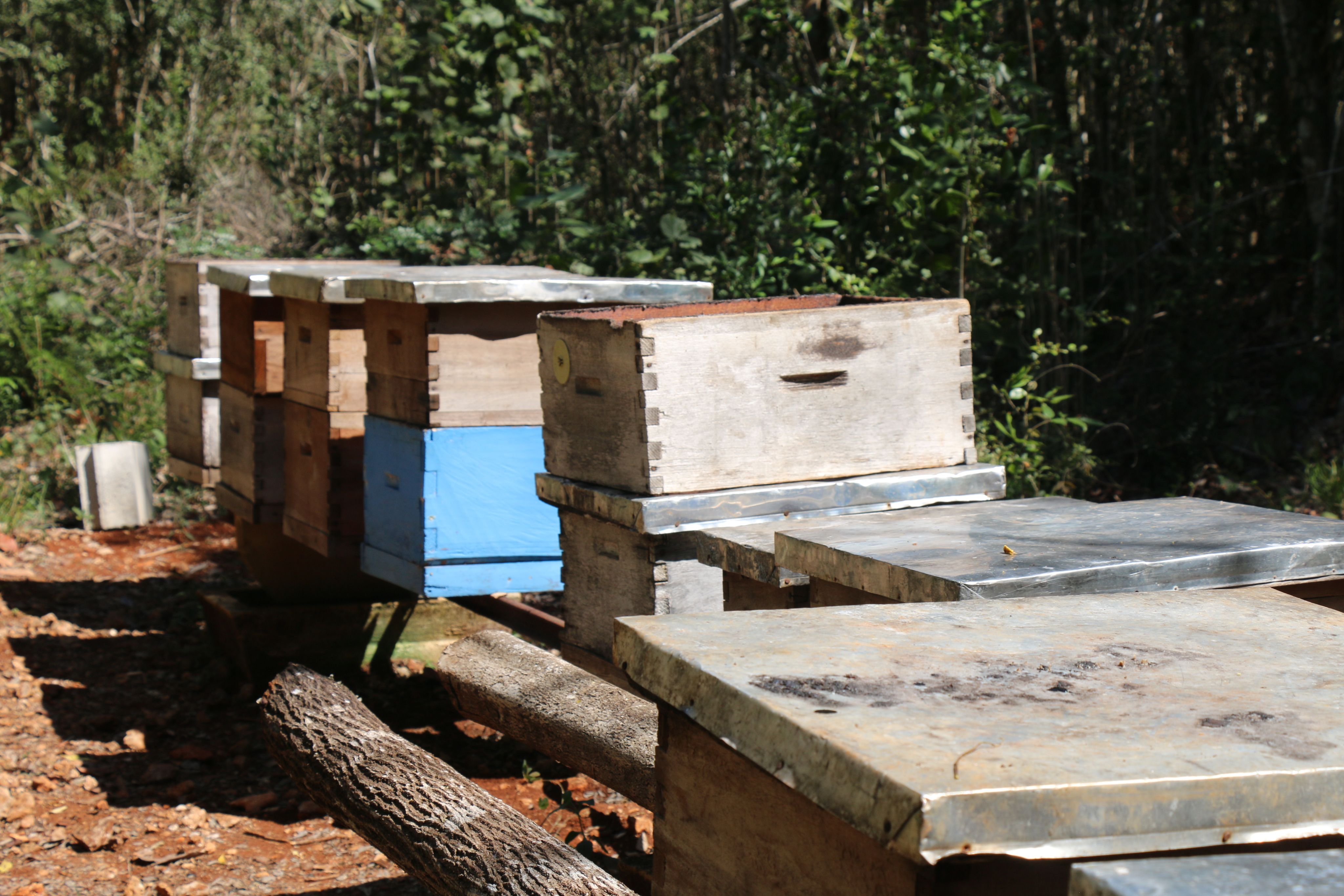
Beekeepers as allies in forest conservation
Minneth Medina doesn’t consider the beekeepers as beneficiaries – but as essential allies without which the project would not be feasible: “We would not be able to move forward if we did not have the confidence to develop the project jointly with the producers, with those who live and work here. Preserving our own identity while commercializing a product that is not causing deforestation and instead helping to conserve the ecosystem while supporting Indigenous communities, is key to our work.”
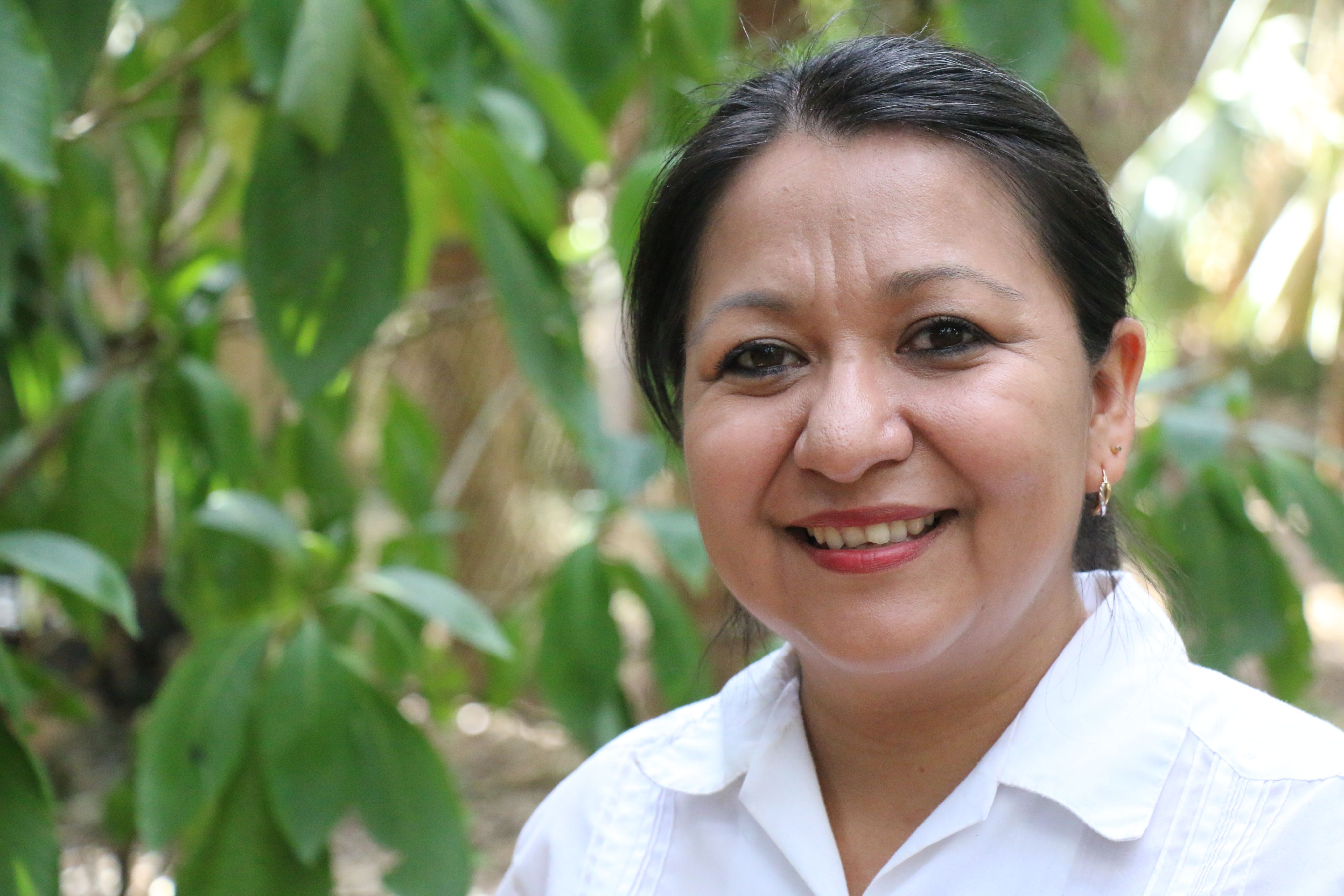
Being a mother and apiculturist has reinforced her determination to preserve the forest, says Wendy Canul Diaz: “When we are going to open a new beehive, we are now carefully considering the implications, because there are almost no more big trees. And if there is no forest, and there are no bees, there will be no life! I really want my children and grandchildren to experience the beauty of this forest.”
© Photo by Roxana Auhagen
© Photo by Roxana Auhagen
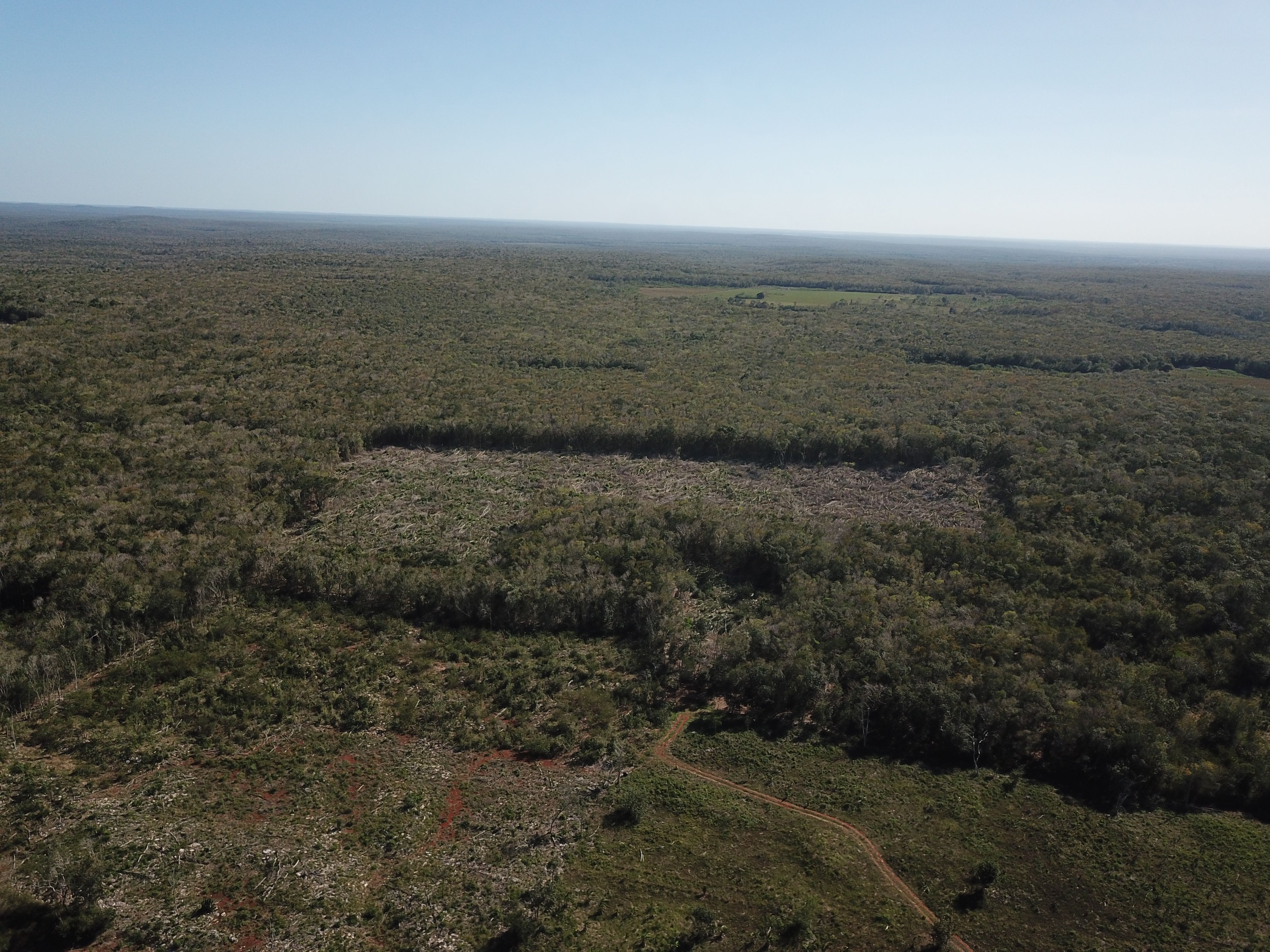
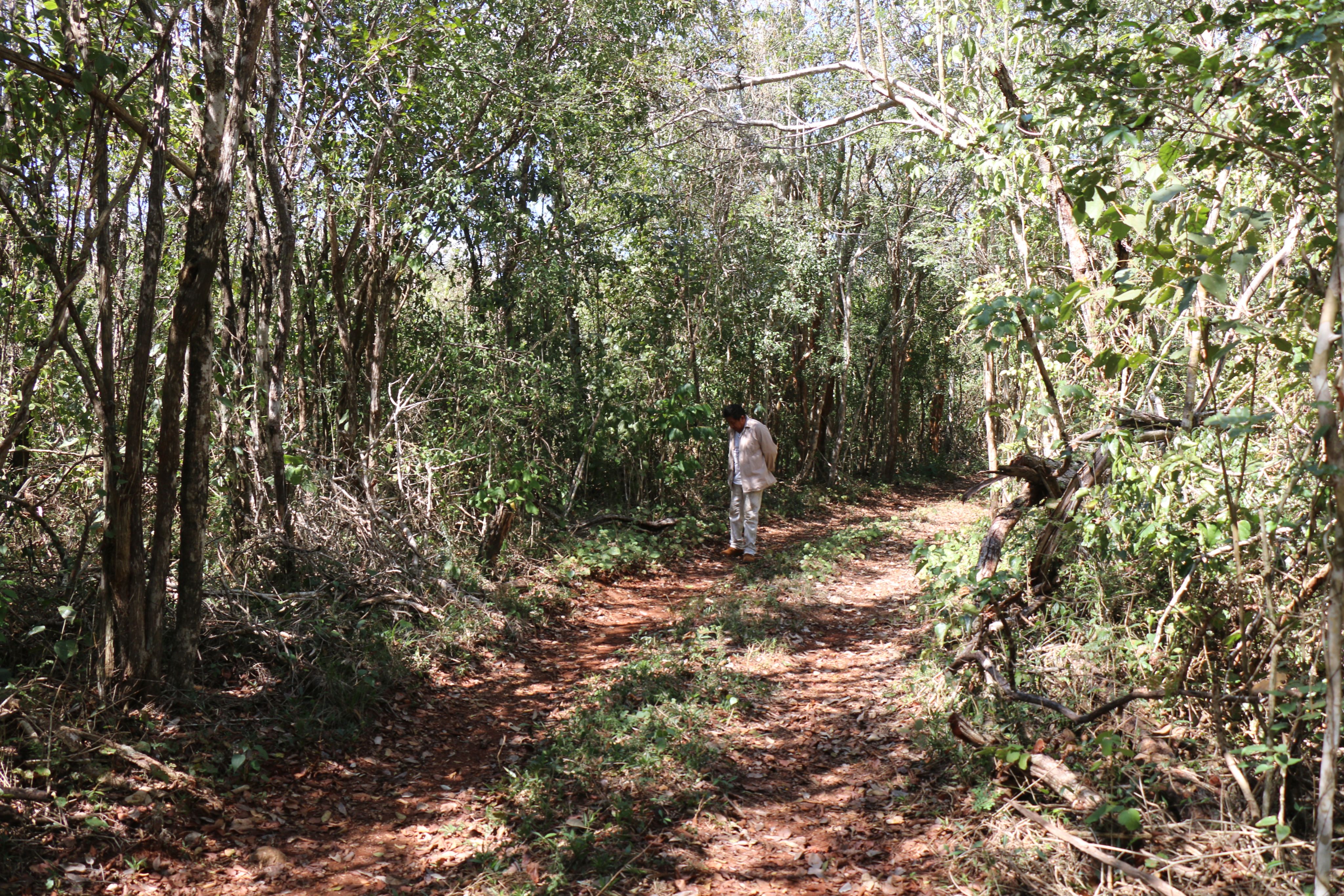
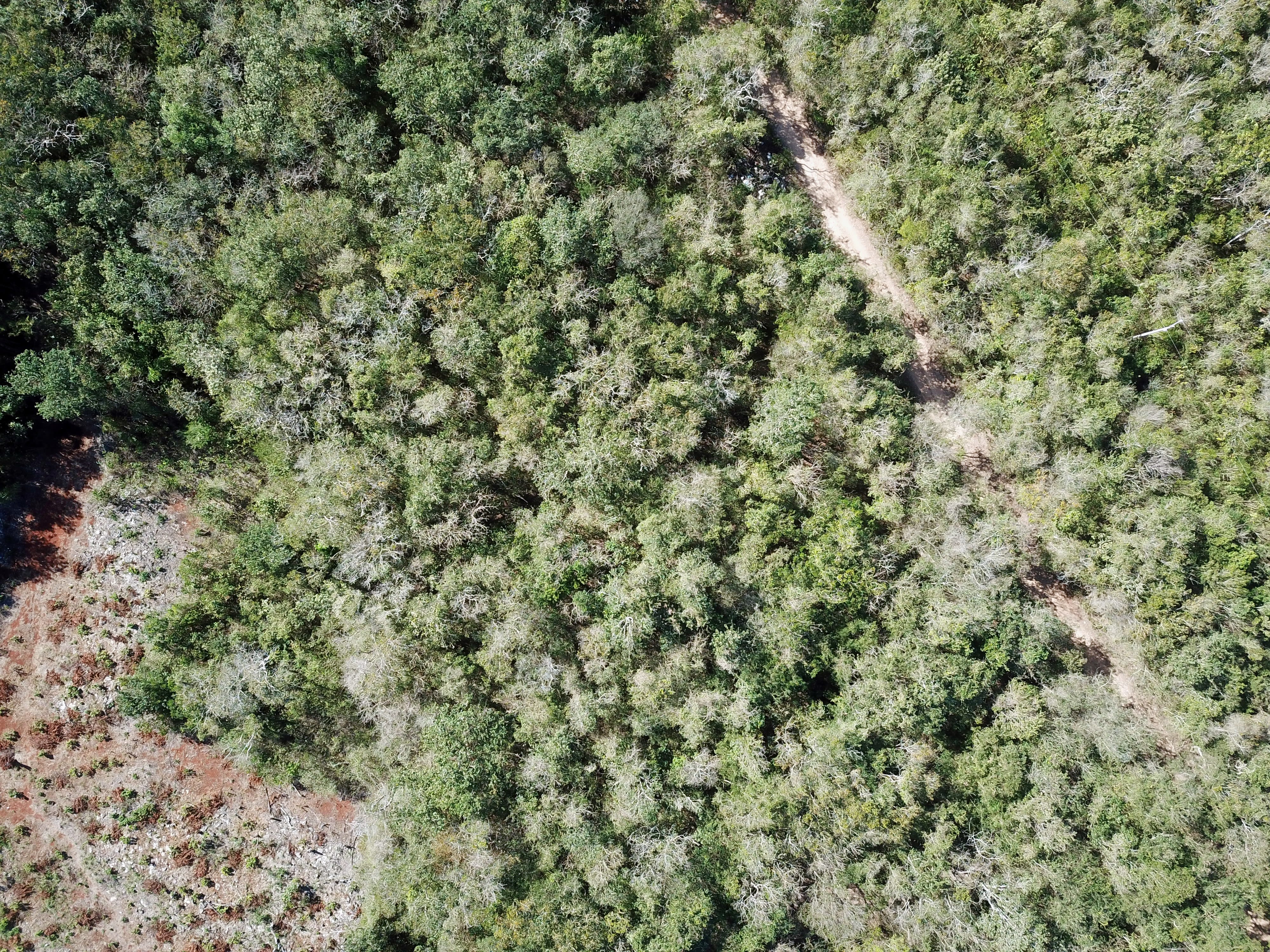
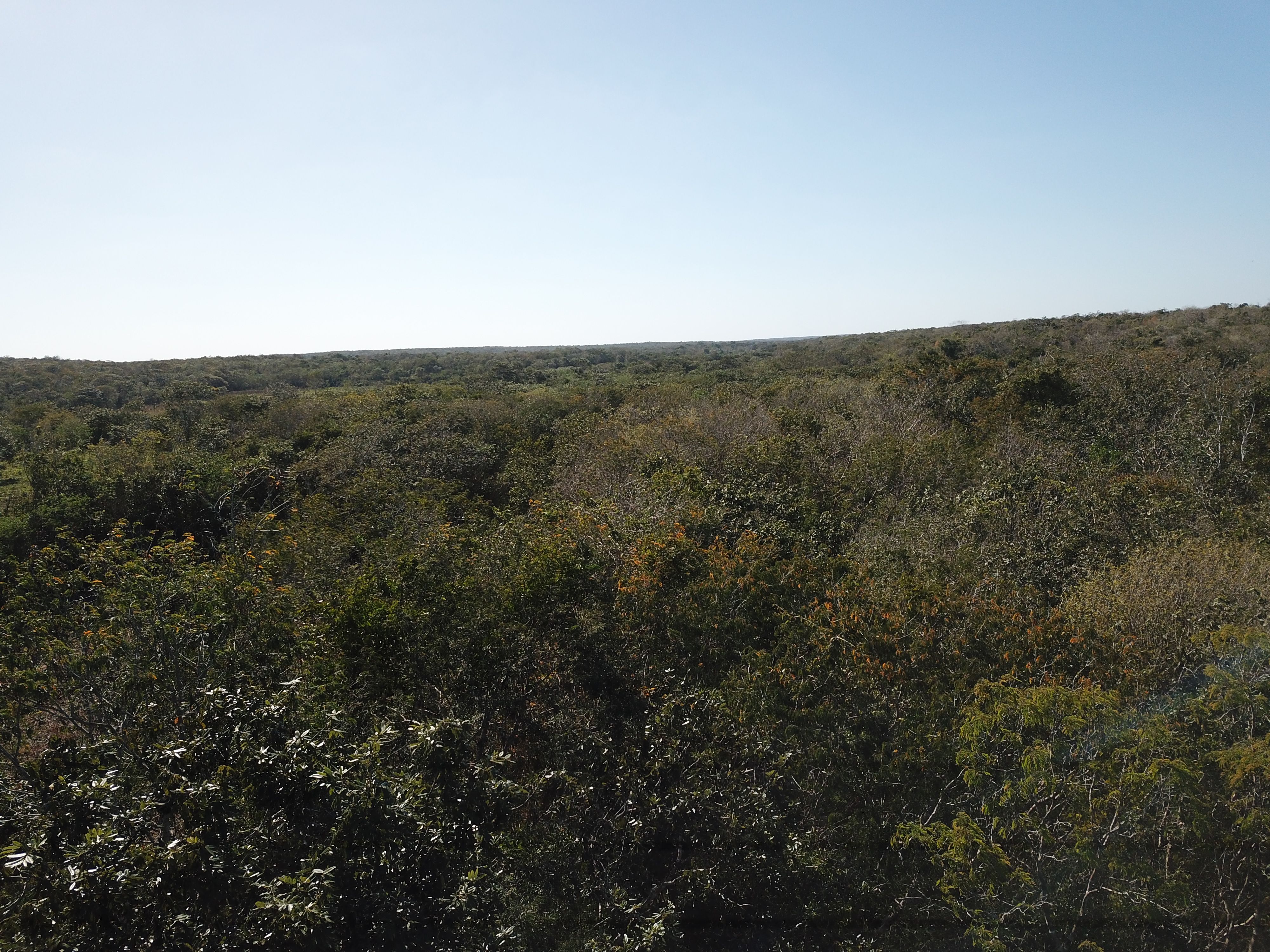
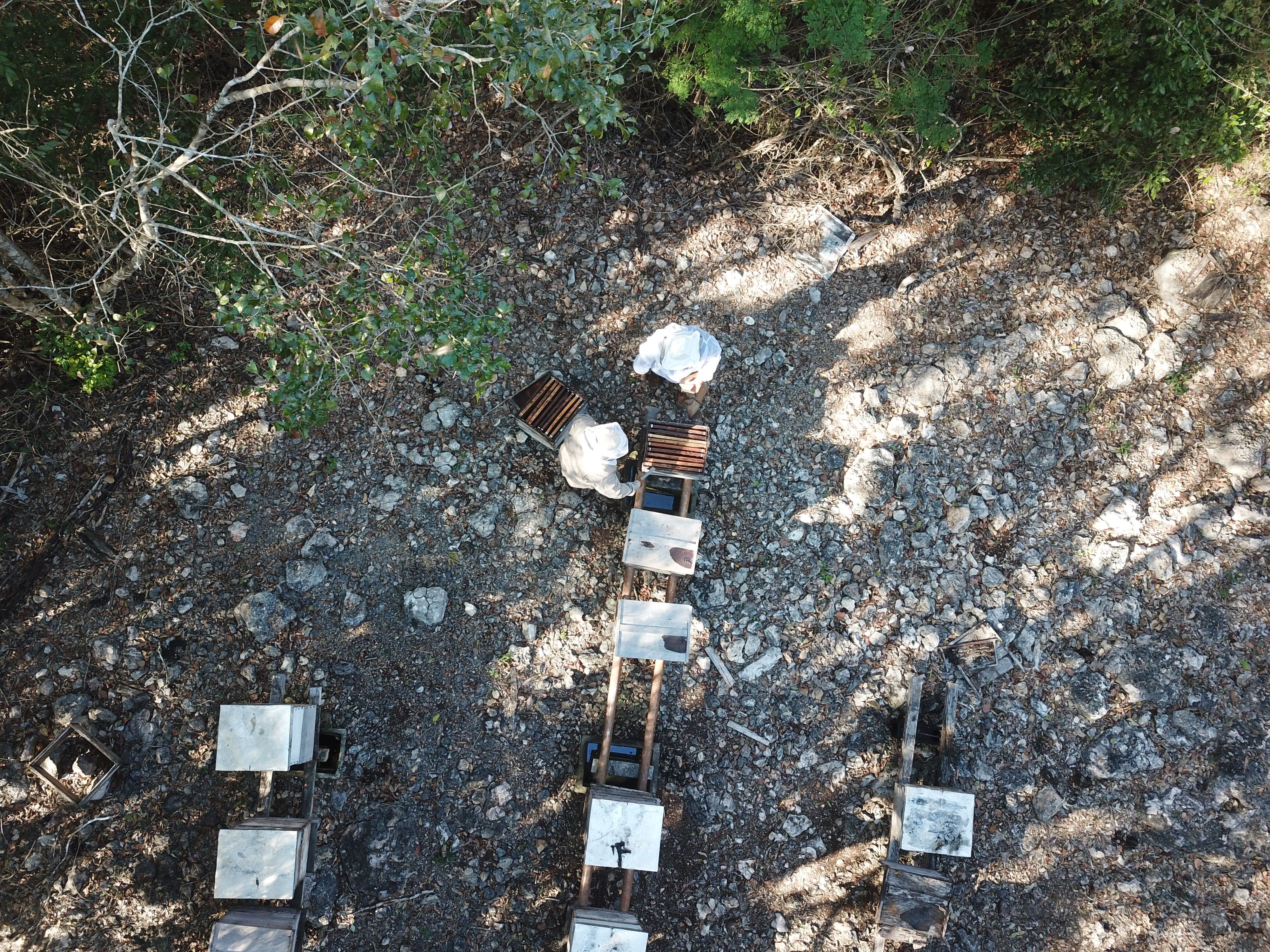
Preserving the last remaining forest mosaic in Yucatán
Established in 2011, the Puuc Biocultural reserve covers an area of 537,778 hectares and harbors several Mayan archeological sites. This impressive stretch of tropical dry forest boasts an impressive biodiversity – including the jaguar and other large felines. The Puuc is also home to Mayan communities who rely on its ecosystem to sustain their families, traditions, and way of life.
Together with the communities and her team, Minneth Medina worked on an innovative proposal for the zoning of the Puuc Biocultural reserve: “Instead of having buffer zones, we tried to identify the location of cornfields, of beehive, of archeological sites, and of threats or dangers, among others.”
Zoning in natural resource management defines different uses in and around protected areas – it is thus a complex decision-making process which needs to reconcile multiple demands for often conflicting land uses. The management plans that derive from the zoning process should therefore reflect the environmental, economic, social, and cultural properties of the land. In the case of Puuc, the zoning process was supported by all municipalities that form part of the biocultural reserve; they also helped establish management plan which foresees different clusters of influence, or “zones”, in and around the reserve. In the first cluster around the core zone of the reserve, any outside project that can potentially affect the environment must be consulted with the authorities and especially the communities. In the second zone, the municipalities themselves need to comply with specific rules around economic activities while the third cluster regulates the use of groundwater that is found in the reserve, to avoid any type of contamination.
"The zoning in Pucc was defined based on the environmental services, on the forest agrobiodiversity and the economic activities around it,” says Minneth Medina. “As a result, we have zones for sustainable use, zones for the conservation of biocultural heritage as well as zones for the conservation of historical heritage.”
Claudia Beatriz Pat Cotz, who is one of the youngest apiculturists in her group in the village of Yaxcaba, says: “We have that great opportunity to work with the bees in the community where we have the right landscapes and where there is good flowering so that they can feed and produce easily. Bees are the engine of life for the planet, we must take care of them.”
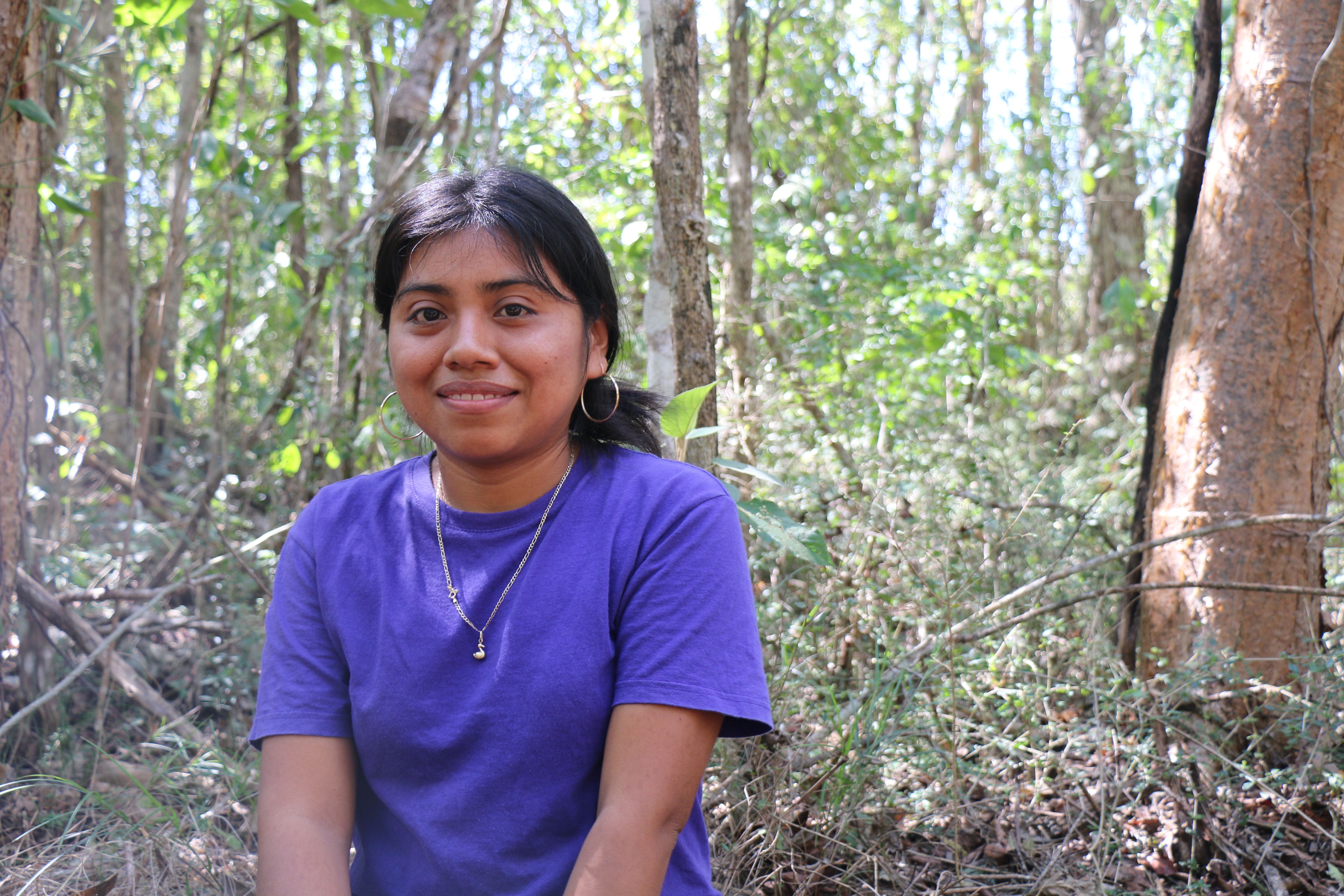
© Photo by Roxana Auhagen
© Photo by Roxana Auhagen
© Photo by Roxana Auhagen
© Photo by Roxana Auhagen
© Photo by Roxana Auhagen
© Photo by Roxana Auhagen
© Photo by Roxana Auhagen
© Photo by Roxana Auhagen
© Photo by Roxana Auhagen
© Photo by Roxana Auhagen
© Photo by Roxana Auhagen
© Photo by Roxana Auhagen
© Photo by Roxana Auhagen
© Photo by Roxana Auhagen
© Photo by Roxana Auhagen
© Photo by Roxana Auhagen
© Photo by Roxana Auhagen
© Photo by Roxana Auhagen

Special thanks to Minneth Medina Garcia and her team at Jibiopuuc, the communities of the Biocultural Reserve of Puuc, Edgar Gonzalez and the UNDP Country Office in Mexico, Sergio Ricardo Aguilar Escalante, Gilberto M. González Kuk and the team at Yucatán’s State Secretary of Sustainable Development (SDS), Eduardo Rendón and WWF Mexico, Sébastien Proust and the UNDP Small Grants Program as well as to the GCFTF and NICFI for their support and partnership.
Story, Video & Photography: Roxana Auhagen, UNDP C&F | Drone Photography: Sébastien Proust, UNDP SGP | Social Media: Sila Alici Kavuk, UNDP C&F
Footnotes:



